By Michael Wright
In today’s digital landscape, visuals are a necessity, not a luxury or an accoutrement. The spread of smartphones and social media has made them an essential part of communication. Visual is the broad term for anything we look at (photographs, illustrations, videos, etc.) used for communication. Visuals are a more effective and efficient means of communication than the written word.
We are visual learners, and we equate seeing with the truth. Our brains process visuals 60,000 times faster than text, and “90 percent of information transmitted to the brain is visual” (Walter & Gioglio, 2014). Not surprisingly, we remember 80 percent of what we see compared to 20 percent of what we read and only 10 percent of what we hear 1 . Compelling images account for 94 percent 2 more views than content without images.
Visuals are a ubiquitous presence in our lives. The challenge facing communication professionals is how to make their message stand out. Visual metaphors offer an opportunity to penetrate clutter and reach an audience.

Visual Metaphors
A metaphor is a figure of speech where a word or phrase is applied to something to which it is not literally applicable in order to imply a resemblance. For example, the internet is the information superhighway. Metaphors are ingrained in how we think and make sense of the world. They’re “pervasive in everyday life, not just language, but in thought and action. Our ordinary conceptual system, in terms of which we both think and act, is fundamentally metaphorical in nature.” (Lakoff & Johnson, 1980). Metaphors are commonplace in advertising. Approximately 75 percent 3 of print advertisements include at least one metaphor in its headline.
Visual metaphors are visual tropes. They are highly structured images that stimulate viewers to understand one concept in terms of another concept (Zeeshan, 2015). Visual metaphors perform better than verbal metaphors in advertising. “…subjects comprehended the advertiser’s intended meaning more often for visual metaphor ads than for verbal metaphor ads” (Scott & Batra, 2004). The reason is simple. The inclusion of the visual eases comprehension because viewers don’t need to create mental images. Visual metaphors are more common than you might think. According to the limited research on the subject, slightly more than three out of ten print ads 4 contain visual metaphors.
Types of Visual Metaphors
There are three types of visual metaphors: juxtaposition, fusion, and replacement. The three types have different levels of complexity based on the amount of inferences viewers need to make to come to an acceptable conclusion. Juxtaposition is the least complex, fusion is moderately complex, and replacement is considerably complex (van Mulken, van Hooft & Nederstigt, 2014).
Juxtaposition
Juxtaposition, also called similes, includes two images side-by-side. The visual includes the product (or target) next to what it’s being compared with (or the source).

This example from Volkswagen juxtaposes a Volkswagen Passat with the lead Elk. The Volkswagen separates the leader from the herd, so we perceive the Volkswagen with the lead Elk. The association is formed from Gestalt’s principle of proximity. Because the Volkswagen is close to the leader, we group it with the leader. Volkswagen is a leader—it is the lead Elk.

The next example is from Gravity Anomaly, an activewear apparel company. It juxtaposes a pair of shorts in front of a gravestone. On face value, it’s a bizarre message. Why would a brand want its product associated with death? The gravestone is a metaphor for a lifetime guarantee. This line of activewear is so durable it will last a lifetime.
Text Anchors
The Gravity Anomaly advertisement is a prime example of the necessity for textual clues. At the bottom, proceeding the logo is the text, “With its LIFETIME GUARANTEE, you wouldn’t want to be caught dead in anything else.” This practice is called “anchoring,” and it provides advertisers with a lifeline to ensure viewers understand the metaphor and the ad’s message. Almost every visual metaphor includes a text anchor to explain the metaphor’s puzzle if viewers can’t work it out for themselves. The desire for text anchors makes sense. Text anchors are a double-edged sword for advertisers. They are proven to aid in viewer comprehension but decreased consumer pleasure in interpreting the message (Phillips, 2000).

Let’s look at an example from Heineken next. The advertisement juxtaposes a glass of beer next to a large stack of CDs. This visual has a few drawbacks that lessen its effectiveness. The scale of the glass of beer is off, or it’s a tiny glass. The second problem is having the Heineken label appear in the stack of CDs. The metaphor is too simple. It requires little cognitive effort—or elaboration—to solve. Generally speaking, the more difficult the puzzle, the more enjoyment a viewer attains from finding the solution. Finally, the advertisers included a text anchor.
This advertisement would be better without the label on the stack of CDs or, better yet without the glass of beer—just the “labelled” stack of CDs as a fusion metaphor.
Fusion—also known as hybrid or synthesis—combines the product (target) with what it’s being compared with (source) to form a single visual element (called a gestalt).

The above example is an advertisement for Sydney Brewery’s Glamarama Summer Ale. It fuses the ale bottle with a popsicle. For the metaphor, the popsicle equals cold—a cold ale is a perfect complement for a hot summer day.

The next fusion example is a Fresh Mug advertisement. It fuses a bale of wheat with a mug complete with beer foam. The metaphor is our beer is so fresh you can taste the wheat.

The next fusion example comes from McDonald’s advertising the McFlurry. The advertisement fuses a man and ice cream, with the ice cream replacing his hair. It’s obvious that he has a McFlurry on the brain. The man’s expression is a further clue that he is thinking of ice cream. He’s staring off in a classic look of contemplation.
Replacement
The final and most complex type of visual metaphor is replacement. Replacement is when either the product (target) or what it is being compared to (source) is absent. Replacement is also called a contextual metaphor because it relies on context for viewers to find (or infer) meaning.

This example from Mercedes-Benz uses a chicken to represent a car, and foxes represent danger and the lane markers. If the chicken strays from her lane, she’ll find danger. This visual plays on viewers understanding that foxes are a natural predator for chickens. Using two of the same predators taps the Gestalt principle of similarity, so viewers group them, making them easily understood as lane markers.

The advertisement above is for Walkin Fitness Studio, an Indian fitness studio. This example uses animals as metaphors for a person. The visual includes silhouettes of an elephant’s rear end, the studio logo, and the front half of a horse. Each silhouette is cut off by a vertical line. The lines are on either side of the logo form a boundary for the logo. The lines and negative space surrounding the logo form the studio. The metaphor is rich: lumber in an elephant, leave a stallion.

Chevrolet provides the example above, where a game of football replaces a car. It’s the context—in this case the lines of the parking space—that allows viewers to infer the action replaces a car.
However, this is another example of how dependent visual metaphors are on text anchors. Without the text mentioning hands free park assist, it would be difficult to apply meaning to the visual. The replacement metaphor is strong (football replacing a car), but the intended meaning is unclear. The football action is also a metaphor for what someone is thinking about when he or she is parking the Chevrolet, and the hands-free park assist allows him or her to think about football instead of parking the car.
Interpreting Visual Metaphors
Visual metaphors aren’t read literally. They require interpretation. Visual metaphors deviate from viewer expectations. It’s the unanticipated deviation (or incongruity) that causes viewers to think figuratively and make inferences about the advertisement’s intended meaning. What viewers do is find the first plausible meaning that seems relevant to the message.
Think of visual metaphors as puzzles—when we see them, we instinctively need to solve them. In our quest to solve the puzzle, we’re going to be lazy and use as little energy as possible. We’re also going to assume that the amount of effort it takes to solve the puzzle equals the amount of reward we’ll gain from finding the solution.
“Receivers are inclined to expend as little effort as possible to understand the message and at the same time they will try to gain as much effect as possible from the message by processing it. In other words, receivers expect that the more processing costs a message requires, the more effect they will gain” (van Mulken, van Hooft & Nederstigt, 2014).
Viewers trade cognitive effort for information and pleasure—the satisfaction gained from finding the visual’s meaning. This exchange of cognitive effort for information and pleasure is visual metaphors’ value for advertisers. It’s also an inherent risk because the information and pleasure effect is contingent on viewers ascertaining the visual’s intended meaning—solving the puzzle. Without the payoff, visual metaphors can frustrate viewers and can be a brand liability.
In visual metaphor research, when an audience can easily understand an advertisement’s meaning, it’s called strong implicature . Conversely, it’s called weak implicature when an audience has difficulty finding a meaning. Let’s look at a few examples.
Strong Implicature

Most of the examples discussed before were strongly implied. This example from Volkswagen has an ostrich in a cheetah suit as a metaphor for a car. It is relying on the audience to know that an ostrich is fast, but a cheetah is faster. The message is our car was fast—the new model is faster.
Weak Implicature

This visual for Viande, a Brazilian food company, is weakly implied. It is difficult to read without prior knowledge of the company. The text anchor (or caption) translates to “noble cuts of beef.” The cow represents the beef—that connection is easy to make. It’s the nobility that is difficult to make. The author’s first thought was that cow looks like a piece of furniture?
The advertiser’s intent was the pattern to be likened to the imprint on a high-end fashion accessory. Viewers were expected then to associate high-end fashion with nobility and apply the attributes of nobility to a cut of beef. Our cattle are premium quality, so our cuts of beef are premium quality.

This advertisement for Boag’s Draught is also weakly implied. The unexpected deviation is the dog’s head. Why is it small? The text anchor, “These waters just make things better,” doesn’t necessarily answer the question. The stick in the dog’s mouth is the clue. He didn’t submerge his head. The water made him big. The advertisement is relying on the audience to know the cliché bigger is better. Without this knowledge, the image looks bizarre. The message is the water from Tasmania is special, and the beer is special because it is brewed with Tasmanian water.
The Benefits
Visual metaphors have three primary benefits: attention , elaboration , and pleasure . Visual metaphors grab attention because viewers notice their novelty—deviation from expectation—stands out from the clutter, particularly in low involvement viewing conditions (e.g., magazine). Visual metaphors provoke elaboration (or cognitive activity), which means viewers make inferences or develop a theory. Pleasure comes from a sense of accomplishment from resolving the visual’s meaning.
“The novelty of metaphors induces perception of error, but when the meaning is understood, the negative tension is relieved. Visual metaphors also elicit pleasure since the initial ambiguity stimulates interest and motivation, and the subsequent resolution is rewarding.” (Jeong, 2008).
Visual metaphors can be seen as counterintuitive for advertisers because “research has shown time and again that consumers are uninterested in, ignore, and actively avoid processing advertising messages” (Phillips, 2003). If viewers avoid “processing” or comprehending advertising messages, why would advertisers want to make it more challenging to process their messages? The answer is simple: people love to solve puzzles .
When we see a visual metaphor, it jars us and grabs our attention because it’s so unexpected. We elaborate on the picture and solve the puzzle and are left with a feeling of satisfaction. We are satisfied because the experience flatters our intelligence (or intellectual capabilities) by showing us that we’re smart enough to solve the puzzle.
Selling Points
Positive attitude.
The secret potential of visual metaphors is the pleasure (or positive feelings) from solving a visual metaphor becomes associated with the product or company. This means that the pleasure the audience gains translates to a positive attitude toward the product and the brand. The boost in a positive attitude is a result of a rapport between the advertisers and the audience established when the audience solves the puzzle. Van Mulken et al. found that advertisements with visual metaphors are appreciated more and better understood than advertisements without visual metaphors (2014).
Increase Recall
Solving a visual metaphor also “enhances memory trace for the ad” (Phillips & McQuarrie, 2004)—simply put, it increases viewer recall of the advertisement.
Visual Metaphors are Persuasive
Including a visual metaphor improves the audience’s perception of the sender’s (or source) credibility. Viewers judge companies that use visual metaphors as more credible because their creativity is evaluated highly. “Metaphors may lead to greater persuasion mediated by message recipients’ positive evaluations of the message source.” (Jeong, 2008).
Jeong (2008) found that advertisements with visual metaphors are more persuasive than advertisements without visual metaphors. The persuasiveness of visual metaphors is linked to the amount of engagement the audience needs to figure out the advertisement’s meaning. “Greater degree of mental participation required by visual argumentation may lead to a product of audiences’ own construction of meaning…and because people are often more willing to adopt a proposition that they have constructed, the implicitness of visual [not clearly expressed] argumentation can be a strong point of visual persuasion.” (Jeong, 2008).
Some research also suggests that persuasiveness is affected by the amount of cognitive effort used making inferences because viewers will have fewer cognitive resources left to counter-argue the advertisement’s claim. The more effort viewers spend speculating on the meaning, the less likely they are to weigh the validity of an advertisement’s claim. This will, of course, increase the likelihood viewers accept an advertisement’s message. We enjoy a compelling visual metaphor so much that we accept its message without looking at it critically.
The Downside
Novelty (or deviation from expectation) is the catalyst for all the benefits of visual metaphors. It’s challenging to come up with a novel concept. What’s worse, the benefits of visual metaphors are dependent on comprehension. Without understanding, visual metaphors are at best useless and at worst destructive. At their root, visual metaphors are a balancing act between complexity and comprehension. If either is out of balance, advertisers have a big problem.
Visuals that are too complex will decrease persuasion and pleasure. “Several studies have suggested that if a message is considered too difficult to solve, demanding too much cognitive processing effort, readers/viewers may opt-out and appreciation decreases.” (van Mulken et al., 2014).
On the other side of the spectrum, visuals that are too easy have minimal benefit. So, if the product and what it’s compared to are similar, viewers have less appreciation for the advertisement. “Advertisements with metaphors that contain relatively comparable sources and targets were less appreciated than advertisements with metaphors with relatively incomparable sources and targets” (van Mulken et al., 2014).
The same study found conventional metaphors were less appreciated than unconventional metaphors (van Mulken et al., 2014), which underscores how tied the benefits of visual metaphors are to novelty.
Visual metaphors rely heavily on context and are culturally constructed. This means that visual metaphors—especially weakly implied ones—run the risk of being misinterpreted and having unintended or conflicting meanings applied to them.
Let’s look at examples of ineffective visual metaphors.
Ineffective Visuals

This example promoting a Toyota with a push-button start is perplexing. Most people associate poking a beehive with pain—being stung—which begs the question, why would a company want its push-button start associated with a beehive? One can only hazard that the concept is to challenge viewers to try it because it isn’t painful.

This advertisement for Karlsberg’s Mixery Blend is cringeworthy. The error may be attempting to be too literal. Clearly, the advertisers didn’t pay enough attention to the implications of attaching an umbilical cord to an alcoholic beverage. Is it wise to have an alcoholic beverage associated with infants or nursing mothers? Also, this idea could link this beverage to bodily fluids—not appetizing.

The execution of this advertisement for Gringo’s Tequila, a South African Tequila company, is excellent. The concept, however, raises cultural issues. The replacement visual metaphor has a Lucha libre (Mexican wrestling) wrestler’s head in a shot glass replacing tequila. It relies on a common stereotype—a lucha libra wrestler—that can easily be seen as offensive, which will impact the company’s brand. In this case, the company probably doesn’t care if it’s seen as a politically incorrect brand—and maybe its customers don’t care either. The point is advertisers and designers need to be cognizant of the cultural implications for their visual metaphors.
There is no denying that visual metaphors grab viewer attention—a necessity for any advertising—the question is to what effect? They offer the opportunity to improve consumers’ attitudes toward a product and brand. Visual metaphors are more persuasive, more appreciated, and better understood than advertisements without visual metaphors.
Visual metaphors are a balance between complexity and comprehension. To viewers, visual metaphors are a puzzle to solve and the greater the challenge, the greater the reward for solving the puzzle. Advertisers need to find the elusive middle ground between too complex and frustrating viewers or too simple and boring them. If viewers can’t resolve a visual metaphor, it hurts appreciation for the product and brand. Text anchors (included text) ensure viewers understand a message but at the expense of spoiling the fun of solving the puzzle. Further, Jeong 2008 found that visual metaphors without text anchors were more persuasive and concluded that “supplementary verbal propositions may not be necessary.”
Moderately complex fusion metaphors have the most potential for advertisers and communicators. “The results from our study demonstrate that visual metaphors of moderate complexity are indeed most effective. Fusions turn out to be appreciated most, whereas replacements, the most complex type of metaphors, are least appreciated.” (van Mulken et al., 2014).
Visual metaphors are a gamble and not for the risk averse. However, if advertisers are willing to roll the dice, visual metaphors present a unique opportunity to penetrate through the clutter and make a rewarding connection with an audience.
- Wyzowl infographic
- Power of Visual Storytelling by Ekaterina Walter and Jessica Gioglio.
- Kim, Baek, & Choi, 2012 reported that approximately 75% print advertisements included at least one metaphor in their headline.
- Studies on the prevalence of visual metaphors are rare. Kaplan (1992) looked 464 prints advertisements for automobiles and alcoholic beverages and found that 31% used visual metaphors.
Gkiouzepas, L., & Hogg, M. K. (2011). Articulating a new framework for visual metaphors in advertising. Journal of Advertising, 40 (1), 103-120. doi:10.2753/JOA0091-3367400107
Jeong, S. (2008). Visual metaphor in advertising: Is the persuasive effect attributable to visual argumentation or metaphorical rhetoric? Journal of Marketing Communications, 14 (1), 59-73. doi:10.1080/14697010701717488
Lakoff, G., & Johnson, M. (1980). The metaphorical structure of the human conceptual system. Cognitive Science, 4 (2), 195-208. doi:10.1207/s15516709cog0402_4
Lidwell, W., Holden, K., & Bulter, J. (2015). The pocket universal principles of design (1st ed.). Beverly, MA: Rockport Publishers Inc.
Phillips, B. J., & McQuarrie, E. F. (2004). Beyond visual metaphor: A new typology of visual rhetoric in advertising. Marketing Theory, 4 (1-2), 113-136. doi:10.1177/1470593104044089
Scott, L. M., Batra, R., & ProQuest Ebooks. (2003). Persuasive imagery: A consumer response perspective . Mahwah, N.J: Lawrence Erlbaum Associates. doi:10.4324/9781410607256
Shan, C., Yu, M., & Xue, K. (2017). Effects of metaphor advertising on brand extension evaluation: Construal level as mediator. Social Behavior and Personality: An International Journal, 45 (6), 967-985. doi:10.2224/sbp.5962
van Mulken, M., van Hooft, A., & Nederstigt, U. (2014). Finding the tipping point: Visual metaphor and conceptual complexity in advertising. Journal of Advertising, 43 (4), 333-343. doi:10.1080/00913367.2014.920283
Zeeshan, A. (2015). Visual metaphors in language of advertising. Language in India, 15 (10), 74-82. Retrieved from http://libraryproxy.quinnipiac.edu/login?url=https://search- ebscohost -com.libraryproxy.quinnipiac.edu/login.aspx?direct=true&db=ufh&AN=110414996&site=ehost-live&scope=site
Visual Metaphor
Glossary of Grammatical and Rhetorical Terms
- An Introduction to Punctuation
- Ph.D., Rhetoric and English, University of Georgia
- M.A., Modern English and American Literature, University of Leicester
- B.A., English, State University of New York
A visual metaphor is the representation of a person, place, thing, or idea by means of a visual image that suggests a particular association or point of similarity. It's also known as pictorial metaphor and analogical juxtaposition.
Use of Visual Metaphor in Modern Advertising
Modern advertising relies heavily on visual metaphors . For example, in a magazine ad for the banking firm Morgan Stanley, a man is pictured bungee jumping off a cliff. Two words serve to explain this visual metaphor: a dotted line from the jumper's head points to the word "You"; another line from the end of the bungee cord points to "Us." The metaphorical message—of safety and security provided in times of risk—is conveyed through a single dramatic image. (Note that this ad ran a few years before the subprime mortgage crisis of 2007-2009.)
Examples and Observations
"Studies of visual metaphors used for rhetorical purposes generally concentrate on advertising. A familiar example is the technique of juxtaposing a picture of a sports car . . . with the image of a panther, suggesting that the product has comparable qualities of speed, power, and endurance. A variation on this common technique is to merge elements of the car and the wild animal, creating a composite image..."In an ad for Canadian Furs, a female model wearing a fur coat is posed and made up in a way that is slightly suggestive of a wild animal. To leave little doubt as to the intended meaning of the visual metaphor (or simply to reinforce the message), the advertiser has superimposed the phrase 'get wild' over her image."
(Stuart Kaplan, "Visual Metaphors in Print Advertising for Fashion Products," in Handbook of Visual Communication , ed. by K. L. Smith. Routledge, 2005)
A Framework for Analysis
"In Pictorial Metaphor in Advertising (1996) . . ., [Charles] Forceville sets out a theoretical framework for the analysis of pictorial metaphor.. A pictorial, or visual, metaphor occurs when one visual element ( tenor / target ) is compared to another visual element ( vehicle / source ) which belongs to a different category or frame of meaning. To exemplify this, Forceville (1996, pp. 127-35) provides the example of an advert seen on a British billboard to publicize the use of the London underground. The picture features a parking meter (tenor/target) framed as the head of a dead creature whose body is shaped as the fleshless spinal column of a human being (vehicle/source). In this example, the vehicle visually transfers, or maps, the meaning of 'dying' or 'dead' (because of lack of food) onto the parking meter, resulting in the metaphor PARKING METER IS A DYING FEATURE (Forceville, 1996, p. 131). Considering that the advert wants to promote public transport, having lots of parking meters wasting away in the streets of London can only be a positive thing for underground users and the underground system itself."
(Nina Norgaard, Beatrix Busse, and Rocío Montoro, Key Terms in Stylistics . Continuum, 2010)
Visual Metaphor in an Ad for Absolut Vodka
"[The] subcategory of visual metaphor involving some violation of physical reality is a very common convention in advertising...An Absolut Vodka ad, labeled 'ABSOLUT ATTRACTION,' shows a martini glass next to a bottle of Absolut; the glass is bent in the direction of the bottle, as if being drawn toward it by some invisible force..."
(Paul Messaris, Visual Persuasion: The Role of Images in Advertising . Sage, 1997)
Image and Text: Interpreting Visual Metaphors
"[W]e have noticed a decrease in the amount of anchoring copy used in visual metaphor ads...We theorize that, over time, advertisers have perceived that consumers are growing more competent in understanding and interpreting visual metaphor in ads."
(Barbara J. Phillips, "Understanding Visual Metaphor in Advertising," in Persuasive Imagery , ed. by L. M. Scott and R. Batra. Erlbaum, 2003) "A visual metaphor is a device for encouraging insights, a tool to think with. That is, with visual metaphors, the image-maker proposes food for thought without stating any determinate proposition . It is the task of the viewer to use the image for insight."
(Noël Carroll, "Visual Metaphor," in Beyond Aesthetics . Cambridge University Press, 2001)
Visual Metaphor in Films
"One of our most important tools as filmmakers is visual metaphor, which is the ability of images to convey a meaning in addition to their straightforward reality. Think of it as 'reading between the lines' visually. . . . A couple of examples: in Memento , the extended flashback (which moves forward in time) is shown in black-and-white and the present (which moves backward in time) is told in color. Essentially, it is two parts of the same story with one part moving forwards and the other part told backward. At the point in time where they intersect, the black-and-white slowly changes to color. Director Christopher Nolan accomplishes this in a subtle and elegant way by showing a Polaroid develop."
(Blain Brown, Cinematography: Theory and Practice , 2nd ed. Focal Press, 2011)
- Metaphor Definition and Examples
- The Different Types of Metaphors
- Vehicle (Metaphors)
- What Is a Creative Metaphor?
- What Is Metonymy?
- What Are Metonyms? Definition and Examples
- How to Explore Ideas Through Clustering
- Simile Definition and Examples
- Hyperbole: Definition and Examples
- Definition and Examples of Conceptual Blending
- What Is Personification?
- What Is a Conduit Metaphor?
- Dead Metaphor Definition and Examples
- Rhetorical Analysis Definition and Examples
- Tenor (Metaphors)
- Definition and Examples of Target Domain in Conceptual Metaphors
Visual Metaphor — Definition & Examples of Metaphors in Art

What is a visual metaphor?
A visual metaphor uses the pictorial representation of an object to suggest an association or similarity. Visual metaphors contain only images and are found in art, advertisements, film, and television. Visual metaphors use physical similarities to make something look like something else, or conceptual similarities, the ideas behind the images.
How is a visual metaphor effective?
A visual metaphor is effective because it uses visual communication to establish themes, develop character arcs, and effectively communicate main ideas.
Establish themes – Visual metaphors use an image that adds insight into the desired interpretation (e.g., using a werewolf to illustrate the internal conflict between conscience and instinct).
Character arcs – By connecting an image to a character, these visual elements become an extension of their identity. The image then impacts that character in some way (e.g., Harry Potter and his lightning bolt scar).
Communication – Pictorial metaphors can communicate information that language often cannot. The translation of words from one language to another may impact meaning. Visual images need no translation; therefore, visual metaphor ads work well (e.g., an image of a beach with an oversized bottle of sunscreen in front of the sun casting a shadow over the crowd).
Learn more about how visual metaphors compare to other types of metaphors .

Visual metaphor examples
Examples of visual metaphors are mainly found in art and advertising, but filmmakers occasionally incorporate them into television shows and movies.
Visual metaphors in movies and on television shows include the following:
Marvel Cinematic Universe – Stars and the colors red, white, and blue cover Captain America’s outfit; he is a visual representation of patriotism.
Rocky – The image of Rocky running up the steps of the Philadelphia Museum of Art represents his growth as a boxer.
Friends – The couch in the coffee shop represents the unity found amongst the friends and emphasizes the bond they share.

Pictorial metaphors in art
Visual metaphor art includes both paintings and sculptures, with some popular examples including the following:
"The Apotheosis of Washington by Constantino Brumidi
The "Apotheosis of Washington" is painted on the ceiling of the rotunda of the Capitol Building in Washington, D.C. It depicts George Washington rising to the rank of a god. It emphasizes that Washington was both a man and an ideal. As a founding father, Washington became an icon, representing the American ideology.
“American Gothic” by Grant Wood
Wood's "American Gothic" contains an image of a farmer with a pitchfork in hand standing next to his wife with their farmhouse in the background. He finished the painting in 1930, just as the Great Depression started to take hold of the country. He used the painting as a response to the dark days ahead, highlighting the strength of the Midwesterners to weather the storm.
“The Thinker” (Le Penseur) by Auguste Rodin
Rodin's "The Thinker" is a sculpture of a sitting man with an elbow on his leg and his chin resting on his fist, suggesting he is deep in thought. The sculpture has come to represent the power of the act of thinking, indicated by the man's athletic build.

Visual metaphors in advertising
Advertisers use visual metaphors to sell a product or service, as they can present a lot of information in a small amount of space. This type of metaphor is more effective than verbal metaphors. The following are examples of visual metaphors used in print ads:
Partnership for a Drug-Free America (PDFA)
The PDFA used two visual elements, the image of an intact egg and one frying in a pan. This visual analogy represents the impact of drug use on the brain.
To emphasize the role orange juice plays in a complete breakfast, Tropicana created a visual metaphor that is the image of an orange shaped like a piece of toast.

Mercedes Benz
Mercedes Benz developed an advertisement containing an aerial shot of a chicken with two foxes on either side. If the chicken were to swerve right or left, the foxes would eat it. The company used this double meaning to advertise its car's ability to stay in its lane automatically.

Top-Quality Guide On Visual Metaphors 2022
Nov 21, 2022 • Martín Etchegoyen
In today’s digital world, visuals are a necessity, not a luxury or a disposable thing. The spread of smartphones and social media has made them an essential part of communication. Visual is the broad term for anything we look at, from photographs to illustrations, videos, etc., that are used for communication. Visuals are a more effective and efficient means of communication than the written word, and visual metaphors are one of the many tools that a designer needs to succeed in this career.
We are visual learners, and we correlate seeing with the truth. Our brains process visuals a lot of times faster than text, and most of the information transmitted to the brain is visual. Not surprisingly, we remember approximately 80 percent of what we see compared to 20 percent of what we read and only 10 percent of what we hear. Compelling images account for 94 percent more views than content without images.
That is why visuals are a ubiquitous presence in our lives. The challenge facing communication professionals is how to make their message stand out. Visual metaphors offer an opportunity to penetrate clutter and reach an audience in a more efficient way than other tools.
Visual Metaphors
Designers are constantly working with metaphor, often without realizing how much of a role it plays in their practice. This is not surprising, though. Metaphor is an inherently human tool that helps people make sense of the world, and so it is a natural material for designers to play with. Without an awareness of how we are using a metaphor, we miss out on its full potential, such as its ability to spark conversations about change. This is particularly important for design leaders, who are trying to influence organizations to bring a customer focus into decision-making.
Trying to be more intentional in your use of metaphor can help elevate your design practice. Visual metaphors are visual tropes. They are highly structured images that stimulate viewers to understand one concept in terms of another idea. Visual metaphors perform better than verbal metaphors in advertising. The reason why this happens is very simple. The inclusion of the visual eases comprehension because viewers do not need to create mental images. Visual metaphors are more common than you might think. According to research on the subject, slightly more than three out of ten print ads contain visual metaphors.
Interpretation of Visual Metaphors
Visual metaphors are not read literally. They always require interpretation and always have a specific connotation. Visual metaphors deviate from viewer expectations. It is the unanticipated deviation that causes viewers to think figuratively and make inferences about the advertisement’s intended meaning. What viewers do is find the first plausible meaning that seems relevant to the message.
Think of visual metaphors as puzzles. When we see them, we instinctively need to solve them. In our quest to solve the puzzle, we are going to be lazy and use as little energy as possible. We are also going to assume that the amount of effort it takes to solve the puzzle equals the amount of reward we will gain from finding the solution.
Receivers are inclined to expend as little effort as possible to understand the message and at the same time, they will try to gain as much effect as possible from the message by processing it. In other words, receivers expect that the more processing costs a message require, the more effective it will be.
Viewers trade cognitive effort for information and pleasure, the satisfaction gained from finding the visual’s meaning. This exchange of cognitive effort for information and pleasure is visual metaphors’ value for advertisers. It is also an inherent risk because the information and pleasure effect is contingent on viewers ascertaining the visual’s intended meaning, therefore solving the puzzle. Without the payoff, visual metaphors can frustrate viewers and can be a brand liability.
In visual metaphor research, when an audience can easily understand an advertisement’s meaning, it is called strong implicature. On the other hand, it is called weak implicature when an audience has difficulty finding meaning.
4 Types of Visual Metaphors
In this section, we will go into detail about four types of visual metaphors : juxtaposition, fusion, fusion, and replacement. The four types have different levels of complexity based on the number of inferences viewers need to make to come to an acceptable conclusion.
1. Juxtaposition
Juxtaposition, also called similes, includes two images side-by-side. The visual includes the product or target next to what it is being compared with, or the source. Juxtaposition can be defined as taking two objects, themes, or materials and combining them or placing them together to create a striking contrast. In interior design, this can be interpreted as adopting two different styles, such as rustic and ultramodern, within the same space, for example.
2. Anchoring
This activity is called “anchoring,” It provides advertisers with a lifeline to ensure viewers understand the metaphor and the ad’s message. Almost every visual metaphor includes a text anchor to explain the metaphor’s puzzle if viewers cannot work it out for themselves. The desire for text anchors makes sense. Text anchors are a double-edged sword for advertisers. They are proven to aid in viewer understanding but decreased consumer pleasure in interpreting the message
Fusion, also known as hybrid or synthesis, combines the product or target with what it is being compared with to form a single visual element, which is called gestalt.
4. Replacement
The final and most complex type of visual metaphor is a replacement. Replacement happens when either the product or what it is being compared to is absent. Replacement is also called a contextual metaphor because it relies on context for viewers to find or infer meaning.
Final Thoughts
Visual metaphors are an excellent tool for UX design . If you understand how to use them properly, your work will be understood in a much faster way and it will get to more people. With the information on this blog, you are now able to start experimenting in the field of visual metaphors .
Martín Etchegoyen
Let’s build something awesome together.

- Scriptwriting
What is a Visual Metaphor — Definition & Examples in Art & Film
- Mixed Metaphor
- Visual Metaphor
- Extended Metaphor
- Implied Metaphor
- Dead Metaphor
F ilm is primarily a visual medium. Filmmakers have various tools to create meaning through visual elements, one of which is the visual metaphor. Visual metaphors are often subtle, but are incredibly important for filmmakers in communicating and resonating with an audience. What is a visual metaphor? How and why do filmmakers use them? We’ll break down a few visual metaphor examples to answer these questions and more.
Watch: What is a Metaphor — 8 Types Explained
Subscribe for more filmmaking videos like this.
Tools For Screenwriters
Literary devices.
Literary Elements
- Deuteragonist
- Foil Character
- Point of View
- Protagonist
Literary Techniques
- Alliteration
- Connotation
- Deus ex Machina
- Foreshadowing
- Iambic Pentameter
- Juxtaposition
- Onomatopoeia
- Personification
- Red Herring
What is a visual metaphor?
Visual metaphor definition.
Before we dive into visual metaphor examples, it’s important to understand how visual metaphors differ from other literary devices ? What makes them unique? How do you spot and interpret a metaphor? The answer starts with the visual metaphor definition.
VISUAL METAPHOR DEFINITION
A visual metaphor is a representation of a noun through a visual image that suggests a particular association or similarity. Visual metaphors are commonly found in film, television shows, photography and even commercial ads.
The meaning created from these objects can help move a story forward, relate to an audience or consumer, or establish a theme.
Visual metaphor examples:
- Workers killed like cattle in Strike
- Kissing in front of fireworks in Aladdin
- Shower drain shot in Psycho
Metaphors in movies
The function of visual metaphors.
The function of visual metaphors depends greatly on what it is being used in. For example, the goal of advertisements is to persuade a consumer while the goal of a film may be to entertain an audience. Both, however, rely on the engagement of the audience.
To properly engage an audience, a filmmaker must communicate both effectively and efficiently. Visual metaphors are perfect for this reason. They help convey meaning through the simple presence of a visual.
The art of the metaphor • What is a visual metaphor?
As mentioned in the video, the precision of metaphors cannot be understated. Visual metaphors, therefore, are a filmmaker's best friend at communicating to an audience. To better understand the function of a visual metaphor, let’s focus on a specific and effective example.
Related Posts
- What is a Metaphor? Definition and Examples →
- Examples of Common Film Themes for Screenwriters →
- FREE: Write Professionally Formatted Screenplays Today →
What is a Visual Metaphor Used For?
Establish characters.
Visual metaphors are great for quickly establishing a character without extensive exposition or on-the-nose characterizing action like saving a cat.
Apocalypse Now has one of the most famous opening sequences of all time. Why? Sure, there’s legendary cinematography , jaw-dropping practical effects , and an instantly iconic needle-drop , but there’s also a great visual metaphor.
If the scene isn’t already permanently etched into your brain, brush up on it below:
Apocalypse Now • visual metaphor examples
Here, director Francis Ford Coppola uses superimposition to create a visual metaphor: Captain Willard’s face is shown over imagery of an active conflict. With this visual metaphor, we instantly understand Willard’s mental state: this is a man broken by the Vietnam War. All this without a single word.
Let’s write out the metaphor to make it clearer: “Captain Willard’s head is a warzone.” This can help us differentiate what makes a characterizing visual metaphor versus a characterizing symbol .
A famous symbol in this vein is Cameron’s father’s car in Ferris Bueller's Day Off . In the film, his father’s car represents his relationship with his father, and as the film progresses, his attitude toward the car shifts accordingly.
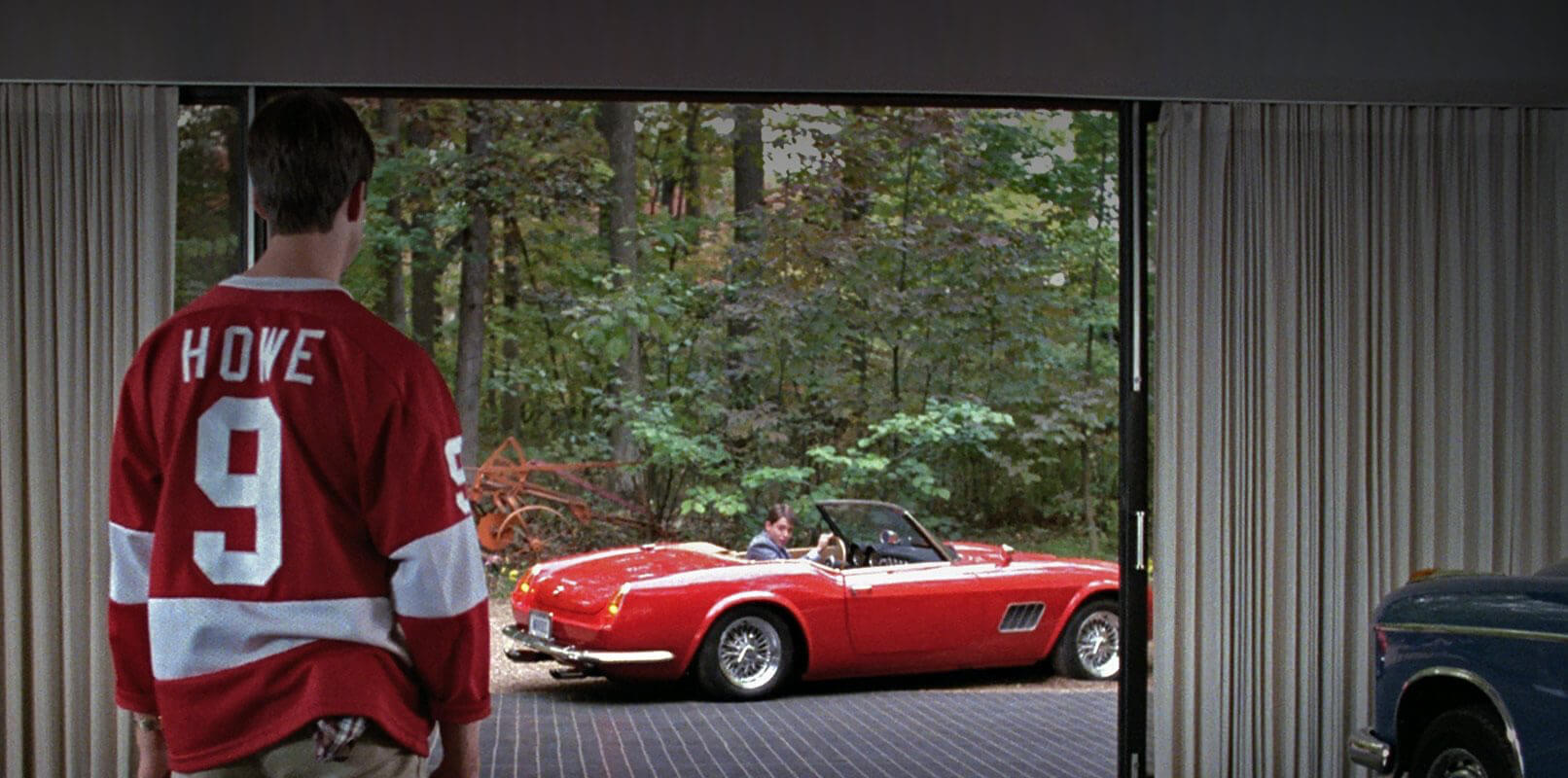
Ferris Bueller’s Day Off • Visual Metaphor Examples
But the car doesn’t work as a visual metaphor because it can’t be directly compared to anything, it simply represents a larger theme. We can’t write out the car symbol as we did the Apocalypse Now metaphor: “Cameron’s father’s car is his relationship with his father” doesn’t make much sense, and isn’t really clarifying.
Of course, this doesn’t mean a visual metaphor is any better or worse than a symbol. They’re just different.
Personify themes
In the beginning of the film The Shawshank Redemption , we are introduced to an older inmate named Brooks Hatlen (SPOILERS AHEAD). Brooks has a pet bird that he keeps in his cardigan pocket. He feeds and nurtures the bird.
The image of the bird being fed within a coat pocket is shocking because birds are typically flying free. While this visual metaphor may not be obvious at first, it becomes more apparent when we understand one of the film’s themes — the dependence of prisoners on the institution
Brooks Attacks Heywood • Visual metaphor examples
As the film goes on and we better understand Brooks' relationship and dependence on the prison system, the visual metaphor of the bird becomes more thematic. The ending voice over narration even says “Some birds aren’t meant to be caged, their feathers are just too bright.” This brings full circle the visual metaphor of Brook’s bird to Andy’s freedom.
Visual metaphors are an incredibly effective tool when used with intention. Understanding what you want to communicate through a visual metaphor will be a great place to start. Then work backwards to what object or image will function as your visual metaphor.
Next time you watch a film, be sure to make note of objects that filmmakers use as visual metaphors and pay attention to how they are incorporated into the film.
- Why Theme is so Important to Storytelling →
- How Filmmakers Use Motifs to Establish Themes →
Intellectual Montage
Visual metaphors can be used to heighten the power of editing. Sergei Eisenstein knew this perhaps better than anyone else. The Soviet director pioneered the intellectual montage , which used editing to juxtapose seemingly unrelated images and create visual metaphors.
Eisenstein applied Hegelian/Marxist dialectic theory to filmmaking; essentially, montage could create a thesis, antithesis, and, finally, synthesis. The power in this approach, Eisenstein believed, was that instead of instructing the audience what to think, film could get the audience to organically arrive at a conclusion themselves.
So what does all of this mean, and how does it relate to visual metaphor? Let’s look at one of Eisenstein’s most famous sequences from Strike :
Strike visual metaphor
Here, Eisenstein pares footage of workers being killed by soldiers with cattle being killed at a slaughterhouse. Through editing, Eisenstein creates a visual metaphor: the workers are being killed like cattle.
This metaphor informs one of the themes of Strike : the Tsarist regime was an enemy of the proletariat. Furthermore, just as it is the slaughterhouse’s job to kill cows, it was the imperial army’s job to persecute workers; it’s simply the nature of their sociopolitical position. Thus, the two parties could only exist in conflict.
A bit heady, right? If Eisenstein tried to spell this out explicitly, he’d most likely lose the audience. But by viscerally depicting it through a visual metaphor, he is prompting the audience to arrive at the conclusion themselves, whether they know it or not.
Eisenstein’s use of intellectual montage, and visual metaphor, made him one of the most important filmmakers of all time. To this day, directors still borrow from his movies and theoretical writing. His work’s longevity proves that visual metaphors are certainly worth your time.
Types of metaphors and examples
Visual metaphors are only one type of metaphor employed by screenwriters and filmmakers. Learn about other types of metaphors in our next article where we break down iconic examples that will help spark ideas for your next project.
Up Next: Metaphors explained →
Write and produce your scripts all in one place..
Write and collaborate on your scripts FREE . Create script breakdowns, sides, schedules, storyboards, call sheets and more.
Leave a comment
Your email address will not be published. Required fields are marked *
- Pricing & Plans
- Product Updates
- Featured On
- StudioBinder Partners
- The Ultimate Guide to Call Sheets (with FREE Call Sheet Template)
- How to Break Down a Script (with FREE Script Breakdown Sheet)
- The Only Shot List Template You Need — with Free Download
- Managing Your Film Budget Cashflow & PO Log (Free Template)
- A Better Film Crew List Template Booking Sheet
- Best Storyboard Softwares (with free Storyboard Templates)
- Movie Magic Scheduling
- Gorilla Software
- Storyboard That
A visual medium requires visual methods. Master the art of visual storytelling with our FREE video series on directing and filmmaking techniques.
We’re in a golden age of TV writing and development. More and more people are flocking to the small screen to find daily entertainment. So how can you break put from the pack and get your idea onto the small screen? We’re here to help.
- Making It: From Pre-Production to Screen
- What is a Light Meter — Understanding the Photographer's Tool
- What is Metonymy — Definition, Examples & How to Use It
- What is a Short Story — The Art of Brevity in Literature
- What is an Action Hero — Best Examples & Defining Traits
- What is a Movie Spoiler — Types, Ethics & Rules Explained
- 3 Pinterest

Aspects of Metaphor pp 189–218 Cite as
- Visual Metaphor
- Noel Carroll 8
401 Accesses
55 Citations
3 Altmetric
Part of the book series: Synthese Library ((SYLI,volume 238))
It is the contention of this paper that there are visual metaphors. That is, there are some visual images that function in the same way that verbal metaphors do and whose point is identified by a viewer in roughly the same way that the point of a verbal metaphor is identified by a reader or a listener.
- Visual Image
- Target Domain
- Source Domain
- Verbal Image
These keywords were added by machine and not by the authors. This process is experimental and the keywords may be updated as the learning algorithm improves.
This is a preview of subscription content, log in via an institution .
Buying options
- Available as PDF
- Read on any device
- Instant download
- Own it forever
- Available as EPUB and PDF
- Compact, lightweight edition
- Dispatched in 3 to 5 business days
- Free shipping worldwide - see info
- Durable hardcover edition
Tax calculation will be finalised at checkout
Purchases are for personal use only
Unable to display preview. Download preview PDF.
The notion of depiction here derives from Monroe C. Beardsley, Aesthetics: Problems in the Philosophy of Criticism (New York: Harcourt, Brace, and World, 1958), Chapter 6, section 16.
Google Scholar
See also: Goran Hemeren, Representation and Meaning in the Visual Arts (Lund: Scandinavian Books, 1969), especially Chapter 2.
See Arthur Danto, ‘Description and the Phenomenology of Perception’, in Norman Bryson, Michael Ann-Holly and Keith Moxey (eds.), Visual Theory: Painting and Interpretation (New York: Harper Collins, 1988), pp. 201–215.
This name for the phenomenon in question was suggested to me by Albert Rothenberg’s notion of homospatial thinking. However, I use the idea of homospatiality far more narrowly than does Rothenberg as will become apparent in this article. He applies the term to music, to literature and to all sorts of visual art, whereas I use the term to refer only to certain forms of visual imagery. For Rothenberg’s wider conception, see Albert Rothenberg, The Emerging Goddess: The Creative Process in Art, Science and Other Fields (Chicago: University of Chicago Press, 1979), pp. 268–328.
In Francoise Gilet and Carlton Lake, Life with Picasso (New York: Signet Books/ McGraw Hill, 1964), pp. 296–297.
Though I agree that this issue would be an appropriate topic of discussion in another sort of paper.
This illustration can be found in Claes Oldenburg, Notes in Hand (London: Petersburg Press, 1972).
See II Kings 23:10 and Jeremiah 32:35.
The distinction between source domains and target domains derives from George Lakoff and Mark Turner. See: George Lakoff and Mark Turner, More than Cool Reason (Chicago: University of Chicago Press, 1989), p. 38.
See, for example, Hollis Frampton, Circles of Confusion (Rochester, N.Y.: Visual Studies Workshop, 1983), pp. 166–167.
See the interpretation of this figure in Carl Linfert, Hieronymus Bosch (New York: Harry N. Abrams, Inc., 1989), p. 74.
Obviously, the language here is adapted from Max Black’s classic article ‘Metaphor,’ from Proceedings of the Aristotelian Society , N.S. 55 (1954–55), pp. 273–294.
I have added the qualification “generally” above since some commentators have claimed that some metaphors are true. One example that has been proposed is “Business is business.” Similarly, there may be borderline cases of visual metaphors where the disparate elements in question are not strictly physically incompossible. For instance, in Horatio Greenough’s famous, patriotic statue George Washington , our first president is dressed in the garb of an Olympian god. The statue invites the thought “George Washington is Zeus.” However, strictly speaking, it is not impossible that Washington wears drapery, though it is impossible, given the facts of his life, that Washington be an ancient anything. Physical noncompossibility, it seems to me, tracks the core cases of visual metaphor, though it certain compelling borderline cases, it may be that the incongruity involved falls short of physical noncompossibility and depends on historical or social impossibility or even unlikelihood.
Such an attitude toward film images is often attributed to Siegfried Kracauer. See his Theory of Film: The Redemption of Physical Reality (Oxford: Oxford University Press, 1960).
For discussions of this position see: Calvin B. Pryluck, ‘The Film Metaphor Metaphor: The Use of Language-Based Models in Film Study’, in Literature/Film Quarterly 3, no. 2 (Spring 1975)
Pryluck, Sources of Meaning in Motion Pictures and Television (New York: Arno Press, 1976); Louis Giannetti, ‘Cinematic Metaphors’, in Journal of Aesthetic Education 6, no. 4 (October, 1972)
Trevor Whittock, Metaphor and Film (Cambridge: Cambridge University Press, 1990), Chapter I.
Clearly the case of Typewriter-pie also blocks the suspicion that all visual metaphors merely illustrate commonplace, pre-existing linguistic metaphors. For to my knowledge there is no pre-existing, commonplace verbal metaphor to the effect that “typewriters are pies.” That is, whereas in certain anti-clerical circles “priests are pies” may be a commonplace metaphor, ‘typewriters are pies’ is not a commonplace linguistic metaphor among any group of English speakers. Moreover, the advent of Oldenburg’s sketch did not make it a commonplace among any group of English speakers. Also, it is the case that many of what I am calling visual metaphors do trade in commonplace metaphors. In this respect some visual metaphors fall into the class that I have elsewhere called verbal images — images that are predicated not only on commonplace metaphors, but also on commonplace idioms, phrases, sayings and so on. The visual metaphors that rely on homospatiality and that illustrate commonplace metaphors fall into the class of verbal images. On the other hand, verbal images that illustrate commonplace metaphors but which do not do it by means of homospatiality count only as verbal images and not as visual metaphors. For an account of verbal images, see: Noel Carroll, ‘Language and Cinema: Preliminary Notes for a Theory of Verbal Images’, in Millennium Film Journal , nos. 7/8/9 (Fall/Winter, 1980’1981).
W. Bedell Stanford, Greek Metaphor (Oxford: Basil Blackwell, 1936), p. 95.
See Monroe C. Beardsley, ‘The Metaphorical Twist’, Philosophy and Phenomenological Research 22, no. 3 (1962).
Moreover, I would want to reject the view that if an image — verbal or visual — only mobilizes object comparisons, then it is not a genuine metaphor. Some metaphors may involve more than object comparisons, but that does not compel us to consign those that only evoke object comparisons to the status of the non-metaphorical.
See Arthur Danto, The Transfiguration of the Commonplace (Cambridge, Mass.: Harvard University Press, 1981)
and A. L. Cothey, The Nature of Art (New York: Routledge, 1990).
See also Carl R. Huasman, Metaphor and Art (Cambridge: Cambridge University Press, 1989). In a somewhat different vein, Michael Baxandall maintains that art criticism is fundamentally metaphorical. See his ‘The language of art criticism’, in The Language of Art History (Cambridge: Cambridge University Press, 1991).
This objection, first and foremost, is aimed at Danto’s view of art as metaphor in his Transfiguration of the Commonplace .
This position is advanced in: Virgil Aldrich, ‘Visual Metaphor’, Journal of Aesthetic Education 2 (1968); and Virgil Aldrich, ‘For in the Visual Arts’, British Journal of Aesthetics 11 (1971). Aldrich’s position is somewhat difficult to follow. It has been usefully recounted by Carl Hausman in his Metaphor and Art , pp. 149’150. I have benefitted a great deal from Hausman’s helpful synopsis.
The requirement here is that the physically noncompossible elements be literally copresent in the same object. This precludes certain cases that people may be prone to call visual metaphors. For example, in the film The Gold Rush , Charlie Chaplin as The Tramp treats the nail of a boot as if it were a turkey-bone (specifically as if it were a wishbone). Due to Chaplin’s miming, on seeing Chaplin’s performance, one is inclined to entertain the thought that the nail is a wishbone. However, since the nail elements and the wishbone elements are not literally co-present in a single object, the image does not count as a visual metaphor. That is, the wishbone is only a suggestion, conjured up by Chaplin’s gestures. No wishbone elements are literally fused with nail elements. Nevertheless, there is a relation between Chaplin’s miming and what I call visual metaphors. In both cases, two or more objects are “superimposed;” but in visual metaphor, the fusion is literal, whereas in the Chaplin case it is not. Rather, Chaplin’s miming induces the audience to use their imaginations in order to grasp the superimposition. The audience imagines the coincidence of the nail and the wishbone rather than seeing elements that are literally co-present in the object. Due to this difference, I am disposed to categorize the Chaplin case, as well as comparable exercises in pantomime, as an instance of Mimed metaphor, rather than visual metaphor. For a discussion of mimed metaphor, see Noel Carroll, ‘Notes on the Sight Gag’, in Andrew S. Horton (ed.), comedy/cinema/ theory (Berkeley: University of California Press, 1991).
It should be noted that this condition entails that nonobjective art is not metaphorical. For insofar as the art in question is nonobjective, it is not perceptually recognizable. This may seem problematic to some since often critics let on that this or that piece of nonobjective are is a metaphor for something or other. But I think that there is a problem here. If a painting is truly nonobjective, then it would appear to me that we have no way of divining the relevant categories whose interplay yields metaphorical insight. Nonobjective paintings can certainly be expressive, they can be moving, they can symbolize things in a noniconic way. But if they are not perceptually recognizable wholes and if they have no perceptually recognizable parts, it is difficult to see how they can enlist metaphorical thinking.
The creature in the movie Alien would appear to be an example of this sort.
Ina Loewenberg, ‘Identifying Metaphors’, in Mark Johnson (ed.), Philosophical Perspectives on Metaphor (Minneapolis: University of Minnesota Press, 1981), pp. 175–176. This entire section of this paper has been heavily influenced by Loewenberg’s article.
This, of course, is a general principle of communication. See, for example, Edward H. Bendix, ‘The Data of Semantic Description’, in D. Steinberg and L. Jokobovits (eds.), Semantics: An Interdisplinary Reader (Cambridge: Cambridge University Press, 1971).
Lakoff and Turner, More Than Cool Reason , p. 63.
Donald Davidson, ‘What Metaphors Mean’, in Philosophical Perspectives on Metaphor , p. 217.
Immanuel Kant, Critique of Judgment , translated by J. H. Bernard (New York: Hafner Publishing Company, 1972), p. 158.
Robert Fogelin, Figuratively Speaking (New Haven: Yale University Press, 1988), pp. 52–67 .
It may be the case that some of Arcimboldo’s fantastic images are to be deciphered as allegories. However, in the case of The Librarian , it seems more accurate to regard it as a representation of a librarian cleverly composed out of books rather than as a visual metaphor. Similarly, though perhaps controversially, I am inclined to regard Picasso’s Bull’s Head as a representation of a bull’s head, cleverly composed out of a bicycle, rather than as a metaphor.
Download references
Author information
Authors and affiliations.
Univerdity of Wisconsin, USA
Noel Carroll
You can also search for this author in PubMed Google Scholar
Editor information
Editors and affiliations.
Boston University, USA
Jaakko Hintikka
Rights and permissions
Reprints and permissions
Copyright information
© 1994 Springer Science+Business Media Dordrecht
About this chapter
Cite this chapter.
Carroll, N. (1994). Visual Metaphor. In: Hintikka, J. (eds) Aspects of Metaphor. Synthese Library, vol 238. Springer, Dordrecht. https://doi.org/10.1007/978-94-015-8315-2_6
Download citation
DOI : https://doi.org/10.1007/978-94-015-8315-2_6
Publisher Name : Springer, Dordrecht
Print ISBN : 978-90-481-4385-6
Online ISBN : 978-94-015-8315-2
eBook Packages : Springer Book Archive
Share this chapter
Anyone you share the following link with will be able to read this content:
Sorry, a shareable link is not currently available for this article.
Provided by the Springer Nature SharedIt content-sharing initiative
- Publish with us
Policies and ethics
- Find a journal
- Track your research

- Previous Issue
- Previous Article
- Next Article
The Visual Experience of Image Metaphor: Cognitive Insights into Imagist Figures
- Article contents
- Figures & tables
- Supplementary Data
- Peer Review
- Open the PDF for in another window
- Permissions
- Cite Icon Cite
- Search Site
Daniel W. Gleason; The Visual Experience of Image Metaphor: Cognitive Insights into Imagist Figures. Poetics Today 1 September 2009; 30 (3): 423–470. doi: https://doi.org/10.1215/03335372-2009-002
Download citation file:
- Reference Manager
In this essay I investigate how image metaphors—metaphors that link one concrete object to another, such as “her spread hand was a starfish”—promote visualization in the reader. Focusing on image metaphors in Imagist poetry, I assert that the two terms (e.g., the hand and the starfish) of many of these metaphors are similar in shape and that this “structural correspondence” encourages the reader to visualize those metaphors. Readers may spontaneously form a “visual template,” a schematic middle ground that mediates between those similar shapes, in order to smoothly move between the two images within each metaphor. The structural correspondence and the mediating visual template allow readers to mentally shift back and forth between the two images, yet readers cannot fuse the two terms through visual imagery. Research supports these claims: reader reports have demonstrated that subjects understand image metaphors primarily through their physical features, and work on the visual interpretation of ambiguous figures suggests that though one cannot fuse images together, one may switch back and forth between multiple images of a figure, especially if the images share the same frame of reference. These findings indicate that readers may be particularly likely to understand image metaphor through visual imagery, especially when the terms of the metaphor correspond physically. This essay is drawn from a larger project on the “poetics of literary visualization”—a part-by-part investigation of the formal features of texts that elicit visual imagery. Such an account helps reveal the workings of the visual imagination and restore critical attention to this neglected aspect of the reading experience.
Advertisement
Citing articles via
Email alerts, related articles, related topics, related book chapters, affiliations.
- About Poetics Today: International Journal for Theory and Analysis of Literature and Communication
- Editorial Board
- For Authors
- Rights and Permissions Inquiry
- Online ISSN 1527-5507
- Print ISSN 0333-5372
- Copyright © 2024
- Duke University Press
- 905 W. Main St. Ste. 18-B
- Durham, NC 27701
- (888) 651-0122
- International
- +1 (919) 688-5134
- Information For
- Advertisers
- Book Authors
- Booksellers/Media
- Journal Authors/Editors
- Journal Subscribers
- Prospective Journals
- Licensing and Subsidiary Rights
- View Open Positions
- email Join our Mailing List
- catalog Current Catalog
- Accessibility
- Get Adobe Reader
This Feature Is Available To Subscribers Only
Sign In or Create an Account
- Before 1500 BCE
- 1500 BCE to 500 BCE
- 500 BCE to 500 CE
- Sixth to Tenth Century
- Eleventh to Fourteenth Century
- Fifteenth Century
- Sixteenth Century
- Seventeenth Century
- Eighteenth Century
- Nineteenth Century
- Twentieth Century
- Twenty-first Century
- Geographic Area
- Central America
- Central and North Asia
- North America
- Northern Europe
- Oceania/Australia
- South America
- South Asia/South East Asia
- Southern Europe and Mediterranean
- Subject, Genre, Media, Artistic Practice
- African American/African Diaspora
- Ancient Egyptian/Near Eastern Art
- Ancient Greek/Roman Art
- Architectural History/Urbanism/Historic Preservation
- Art Education/Pedagogy/Art Therapy
- Art of the Ancient Americas
- Artistic Practice/Creativity
- Asian American/Asian Diaspora
- Ceramics/Metals/Fiber Arts/Glass
- Colonial and Modern Latin America
- Comparative
- Conceptual Art
- Decorative Arts
- Design History
- Digital Media/New Media/Web-Based Media
- Digital Scholarship/History
- Drawings/Prints/Work on Paper/Artistc Practice
- Fiber Arts and Textiles
- Film/Video/Animation
- Folk Art/Vernacular Art
- Genders/Sexualities/Feminisms
- Graphic/Industrial/Object Design
- Indigenous Peoples
- Installation/Environmental Art
- Islamic Art
- Material Culture
- Multimedia/Intermedia
- Museum Practice/Museum Studies/Curatorial Studies/Arts Administration
- Native American/First Nations
- Patronage, Art Collecting
- Performance Art/Performance Studies/Public Practice
- Photography
- Politics/Economics
- Queer/Gay Art
- Race/Ethnicity
- Religion/Cosmology/Spirituality
- Theory/Historiography/Methodology
- Visual Studies
- Mission Statement
- Editorial Board and Field Editors
- Past Editors
- Terms of Use
- Submission Guidelines for Reviewers
- Republication Guidelines
- Citation Guidelines
- Letters to the Editor
- Dissertation Submission Guidelines
- 2011 Centennial Project
A worthy contribution in the still-growing efforts to de-silo theory from practice in writing and teaching about contemporary art, Mark Staff Brandl’s A Philosophy of Visual Metaphor in Contemporary Art is approachable and informal while being specific and sincere, and a tonal success for the way it loosens up and shakes out the rhetoric, jargon, and tropes common to so much scholarly writing about art. Visual tropes and metaphors (as opposed to literary ones) are central protagonists in Brandl’s philosophy of art, and they anchor his major propositions about the mechanics of visual communication and interpretation. They are not glib or surface facsimiles of legitimate cultural knowledge, but rather, “discovered and built out of revisions of cultural possibilities, in fact, fought for and won” (6), a crystalline thesis which lands Brandl’s theory of art in an obvious historical dialogue with Kant and ontology, particularly the idea that the material conditions of possibility are not necessarily predicated on existence; they can be thought into reality, just as concretely and just as well. This metaphysical understanding of the cultural tangibility of visual metaphors also aligns Brandl’s text with trending contemporary art practices engaged in the concepts of world-building, reality construction, and parafiction.
Dense, obscure, theoretical language has dominated art history, critical theory, and the pictorial turn for decades, such that it is now its own kind of trope. This writing style has thankfully receded in recent years due to the efforts of a few emerging scholars. Brandl is a more established voice in the field, but he asserts that while high theory has long ruled literature and art departments respectively (2), the usable fusion of philosophy with art interpretation has not yet entered its mature phase, and that this provides one of the rationales for the publication of the book (21). On the maturation point I disagree—post-structuralist art analysis and methods have certainly seen their heyday in academia—but I am nonetheless happy for the other expansions that Brandl offers.
One particular expansion involves moving the linguistic and semiotic analysis of images beyond the domain of advertising images, which has historically been the origin point along the art-philosophy axis. Roland Barthes’s 1964 essay “Rhetoric of the Image” was the pacesetter for a significant wave of scholarship (and for a while, entire academic departments) devoted to semiotics, their influence peaking in the late 1980s. Art turned to language during these decades for some shiny new methodologies, and philosophy turned to aesthetics, and it is from this late twentieth century disciplinary swapping of source materials that a different set of intellectual silos were built to store theories about the comparative and distinct functions of image versus text. Quoting abstract painter William Conger, Brandl asserts in Chapter four (overall one of the book’s strongest chapters) that the chief function of text is to “eliminate” ambiguity, whereas “the visual is always ambiguous. It cannot be unambiguous” (86). For an abstract painter, this is probably largely true. But is it true for, say, anything Warhol or Judd ever claimed about their own work? While it does help as an initial heuristic to set language and image apart to examine their components and limits, it cannot be responsibly said that text always drives toward specificity and monosemy, and that images always retreat from it.
Brandl’s book feels in this respect like a holdover from the golden era of semiotics, with more utility as an explication of philosophy via art than as a working theory of contemporary art. It feels even more so this way with each reference to contemporary art as a coherent unit that might be served wholesale by this guide, as if to suggest that contemporary art is isolable and definable sheerly by virtue being visual as opposed to textual. But is it? Any serious student of contemporary art knows deeply its multivalency and categorical resistance to being one or anything in particular, even necessarily visual. To treat contemporary art as a monolith that can withstand and absorb across-the-board analysis therefore draws suspicion. Brandl does recognize that abundance and multivalence of metaphorical readings are important to a lot of contemporary art, even possibly contributing to its significance and its degree of “wonderfulness” (20). But this is still an unwieldly generalization considering the efforts of minimalist and conceptualist artists who sought to pare down or evacuate metaphor entirely—efforts which the author insists through the example of Lawrence Weiner are both impossible and wrongheaded (33). Some historians of conceptualist and minimalist art would beg to differ: not that that eliminating all referentiality is a fool’s errand, but that it is never quite that simple.
Metaphor, the author points out, is both a detour and a destination, a turning toward and a turning around, both of and about something. This is what makes it so instrumental toward understanding art. The experience of what a particular artwork conjures in a viewer and the specific form it takes are distinct but interwoven elements. It might move Brandl’s theory into even more productive philosophical territory to discuss certain art works that “feel” like what they aim to represent—not just present an idea about it, which would be the domain of pure cognition, but which produce something else beyond cognition: a bodily or sensory or haptic or uncanny effect, or the thing that Joseph Kosuth wrote in Art After Philosophy And After makes art, art and everything else, everything else. My mind goes initially to Bruce Nauman’s Waxing Hot , Yoko Ono’s textual propositions in Grapefruit , Robert Irwin’s discs, Mickalene Thomas’s Something You Can Feel , any one of Rachel Harrison’s polystyrene sculptures. Speaking of Harrison, here is Maggie Nelson in The Paris Review in 2020, honing a point that A Philosophy of Visual Metaphor in Contemporary Art reaches for throughout, but doesn’t quite capture as succinctly: “Harrison’s sculptures are remarkable for their capacity to stir up the primal agitation at the root of cognition and analysis, the whir of thinking.”
“The whir of thinking” could also characterize Brandl’s entire book as an intellectual and didactic exercise. Ultimately, it is useful for artists who, like the author, seek a roadmap for how to imagine a methodological bridge between analytic philosophy and imagery, “a theoretical apparatus for understanding the struggles of contemporary artists and their achievements, at once both intellectual in tangible, in using visual metaphors” (94). From an art historian’s perspective, much of the book reads like a statement of methods rather than their full explication. On the plus side of its teachability, however, the book breezily moves through dense concepts from analytic philosophy, not by surgically defining precise terms or historicizing their usage as would be the charge of traditional academic studies, but by applying them economically to specific and varietal objects. The cartoons that serve as epigraphs at the beginning of each chapter, also authored by Brandl, are wordy infographic illustrations that mostly recapitulate the ideas in the text. They may serve as useful teaching tools or not, depending on one’s relationship to other famous diagrams of art history and their tendency to either illuminate or occlude comprehension, joining Rosalind Krauss’s map in “Sculpture in the Expanded Field,” Alfred Barr’s Cubism and Abstract Art , the golden rectangle, the Vitruvian Man , and so on.
Speaking of artists and utility: in a chapter subtitled “paint, to paint, a painting, painting,” Brandl does not directly address but still invokes a famous scholarly debate between philosopher Martin Heidegger, art historian Meyer Schapiro, and alpha-deconstructionist spoilsport Jacques Derrida on a painting (which painting?) by Van Gogh, of his (or were they a peasant woman’s?) shoes. Derrida arrives last to lift the veil, to show how deconstructionism takes the polysemy of language and uses it to lube up the friction between reality and representation. In French, peinture (painting) is one vowel and infinite reference points away from pointure (verb), alternately meaning pointing, pricking, puncturing, and a tool used in bootmaking. The dictionary definition of pointure serves as one of three epigraphs that begin the essay. The other two are quotes about truth and painting authored by Cézanne and Van Gogh, which alternately speak about truth in art as something which is either existential and communicable, or metaphysical and immanent. It is a brilliant, near-infographic distillation of Kantian analytic philosophy via art delivered in three short pull quotes, and it lingers unaddressed in the background of Brandl’s text and its attempts to communicate more or less the same. The linguistic coincidence of peinture and pointure , the extremely tight neighborliness between the real and the represented, is the armature around which Derrida builds an entire rebuttal and correspondent theory of art, sending the high-minded tête-à-tête crashing back down to the concrete object of the shoes, permanently. “It was materiality the whole time!” the artist laughs in the distance. Even the language was the material. The representation was always the real thing.
Brynn Hatton Kindler Family Assistant Professor in Global Contemporary Art Department of Art and Art History Colgate University

- By accessing and/or using caa.reviews, you accept and agree to abide by the Terms & Conditions .

MW-Comm Blog
Your stop for media witticisms and criticisms.
Visual Storytelling
An Introduction to Visual Metaphors

Metaphors are a common figure of speech where a word or phrase is applied to something to which it is not literally applicable in order to imply a resemblance. Metaphors are also a common technique in visuals, particular print advertisements, and PSAs. Visual metaphors are highly structured images that stimulate viewers to understand one concept in terms of another concept. They are a potent weapon in the communication professional’s arsenal.
If you’d like a compact five-minute overview of visual metaphors, please check out my Ignite presentation below:
https://quinnipiac.voicethread.com/share/13050123/
My presentation includes photos I took from Unsplash . My thanks to the following:
- Ilkka Kärkkäinen (slide #1)
- Aaron Burden (slide #2)
- Kyle Hanson (slide #3)
Gkiouzepas, L., & Hogg, M. K. (2011). Articulating a new framework for visual metaphors in advertising. Journal of Advertising, 40 (1), 103-120. doi:10.2753/JOA0091-3367400107
An in-depth understanding of visual metaphor with famous examples . Retrieved from https://penlighten.com/understanding-visual-metaphor-with-examples
Jeong, S. (2008). Visual metaphor in advertising: Is the persuasive effect attributable to visual argumentation or metaphorical rhetoric? Journal of Marketing Communications, 14 (1), 59-73. doi:10.1080/14697010701717488
Joy, A., Sherry, J. F., & Deschenes, J. (2009). Conceptual blending in advertising. Journal of Business Research, 62 (1), 39-49. doi:10.1016/j.jbusres.2007.11.015
Mohanty, P. (., & Ratneshwar, S. (2015). Did you get it? factors influencing subjective comprehension of visual metaphors in advertising. Journal of Advertising, 44 (3), 232-242. doi:10.1080/00913367.2014.967424
Ortiz, M. J. (2010). Visual rhetoric: Primary metaphors and symmetric object alignment. Metaphor and Symbol, 25 (3), 162-180. doi:10.1080/10926488.2010.489394
Phillips, B. J., & McQuarrie, E. F. (2004). Beyond visual metaphor: A new typology of visual rhetoric in advertising. Marketing Theory, 4 (1-2), 113-136. doi:10.1177/1470593104044089
Scott, L. M. (1994). Images in advertising: The need for a theory of visual rhetoric. Journal of Consumer Research, 21 (2), 252-273. doi:10.1086/209396
Shan, C., Yu, M., & Xue, K. (2017). Effects of metaphor advertising on brand extension evaluation: Construal level as mediator. Social Behavior and Personality: An International Journal, 45 (6), 967-985. doi:10.2224/sbp.5962
van Mulken, M., van Hooft, A., & Nederstigt, U. (2014). Finding the tipping point: Visual metaphor and conceptual complexity in advertising. Journal of Advertising, 43 (4), 333-343. doi:10.1080/00913367.2014.920283
Share this:
7 thoughts on “ an introduction to visual metaphors ”.
Add Comment
Your presentation blew me away! Being that it was a unique topic, I was excited to learn something new. I think you did a great job staying on theme while introduction a lot of new lessons. All of your images flow very nicely with your presentation and helps the viewers really follow along with each topic. They were clear and easy to interpret images for each example.
I’d suggest for your essay to break down each different metaphor into each topic to expand on. You also really go into how people use failed metaphors and possibly relate it to the topic of ‘emotions by accident.’
You can also use the Gestalt principals for interpreting the metaphors in each ad. I’m wondering if you can also mention emotions using colors as well since a metaphor is partly about interpreting something based on culture. Question, will you only be talking specifically about advertisements, or are you discussing other visuals as well?
Overall I can tell you’ve done your research and I’m looking forward to reading your paper! I can already tell that it will have a great flow because of how focused and structured your presentation was.
Best of luck!
The above comment from nrmartinelli is Natalie Martinelli!
I will start off with the first things that come to mind – your timing, pace, and cadence are all awesome! I’m not sure if you film how-to’s or tutorial videos, but you seem like you’d be great at it.
The way you introduce your topic and define what a visual metaphor is is attention-grabbing, and you use excellent examples to illustrate how ads can utilize the various ways to present visual metaphors – juxtaposition, fusion, and replacement.
Because visual metaphors aren’t meant to be interpreted literally, and because “the image deviates from our expectations,” I thought it was interesting that viewers/consumers get a kick out of making inferences and solving the riddles that are hidden in visual metaphors (also, good job on the process of how we understand metaphors and describing strong implicature versus weak implicature).
You’re right when you say that creating visual metaphors is often a challenge because it requires having some sort of common cultural understanding and context – I imagine that this is especially challenging for global brands that cater to wider audience.
You mention that content and advertisements that include visual metaphors tend to do better than ads that don’t include them, and given your commentary, I can understand why this is. I hope that in your essay, you include examples of how companies have used visual metaphors effectively (which you’ve done), and perhaps instances where they failed. I’m not sure if the Tasmanian water/beer ad was an example of this, but I do think the marketers behind that ad were stretching…or maybe I’m just not the right audience.
Hi Michael,
Your presentation is the one that I enjoyed the most so far. The topic of your presentation is not only fascinating but, accompanied with excellent visuals, puts some controversy in the spotlight while the slideshow goes. This “twist” really keeps viewers amused and connected to your talk. But my perception noticed controversy even before that point. I thought about our recent class discussion about visual stories that evoke different emotions than the ones they portray. For example, a warm “A touch and done” ad evokes an unpleasant feeling. I realized that my perception is coming from my own experience with bees and push start button. We had a group of kids stung by bees in my daycare with I was a child as we tried to play with a nest. The push button start in a rental car was a horrible experience because I drove Subarus for many years; it does not seem like Subaru engineers consider that feature useful. As you defined in your introduction, “Visual metaphors are highly structured images that stimulate viewers to understand one concept in terms of another concept.” As Safwat Choudhury described in his blog post, “Another level of emotional response, which is also unconscious, is behavioral level design; this is a learned because it incorporates our past experiences.” So it happened accidentally that one of my negative experience with the concept of bees is linked to another poor experience with a push button start. I wonder how my perception would change if one of these experiences was positive.
I’m glad that you did not just read the prewritten text copy like I heard in some other presentation. Even if you did, your narrative sounds organic and confident, like you are talking to the audience, not just reading your story monotonously. Some other presentations were hard to comprehend as their narrative was not adjusted for the ear. We studied differences in writing for the ear versus writing for the eye in our Writing for Interactive media class, and I pointed in my blog post that “When you write for print, you might not even realize how it sounds when somebody attempts to read it aloud. But I always read any text copy written to the ear. If it seems natural to vocalize, without your tongue twisting at any point, it means, this copy is ready for listeners.”
Thank you for a very informative presentation.
Michael, What a presentation! I was blown away by your ease of presenting a topic that has limited studies and the way you discussed it. I love a good metaphor, but I haven’t even thought about how we likely use visual metaphors more than we realize. It was helpful that you included the definition of visual metaphors and how they are useful, “Visual metaphors are highly structured images that stimulate viewers to understand one concept in terms of another concept. They are a potent weapon in the communication professional’s arsenal.”
Before your presentation, I had no idea that there are 3 types of visual metaphors. I thought the visual examples of juxtaposed images were really interesting. My favorite images that you shared were the Passat elk image and the football player image for Chevrolet that acted as a metaphor for their park assist product.
You made a great point in that the viewers need to understand what they are viewing and create a theory. At first, the image of the man on the dock with the big dog with the tiny head was also lost on me. After reviewing the image further, I noticed the slogan talking about how the water is better. Your comment about the stick is what helped me to realize that of course, the dog was swimming with his head above the water.
I look forward to reading your paper about visual metaphors. I think you found some great examples that work, but I would love to see examples of metaphors that don’t work. If you could find similar examples but where one does a great job versus one that fails, that would be a good approach.
Juxtaposition, fusion, and replacement — three types of visual metaphors in advertising. Your presentation was structured perfectly, with a clear introduction, great examples and descriptions, and a well-formed conclusion to tie it all together. It was very easy and, therefore, engaging to follow your narrative arch.
While you were going through your examples, I was really surprised how oblivious I am to these visual metaphors that surround me. Just looking on my coffee table, I see several visual metaphors from magazines and one from a birthday card.
Your analyses were well thought out and you go through a number of examples so good job with that!
What I enjoyed most was in your conclusion, where you discuss how visual metaphors rely on our understanding across a vast expanse of information. This is something that has been a common theme throughout this program — that perception relies heavily on learned and environmental experiences.
You suggest that it is difficult to make good advertisements using visual metaphors and you are right — you really only get one shot for the audience to understand it. If no one gets it, it’s not very effective (which is how I felt about the VW and the bee example).
You chose a very interesting topic. I had never really thought much about visual metaphors until your presentation. After watching it, I can’t help but think that we see visual metaphors practically every day and just don’t realize it. You took a topic, I’ve never really seen talked about outside of a classroom and made it incredibly interesting. The pictures you used worked so well with the flow of the presentation. They also made you think. In the picture with the dog with the small head, I had no idea what it was talking about until you dove more in-depth with it and explained what it was all about.
You had a very good flow of the presentation. It seemed to me as if you were just talking and not really reading off a script. In my opinion, that’s what makes a good presentation, great. You have the voice for this type of presentation too. When I first started your video, I clicked away to open up a notes tab and I couldn’t place the voice. This being the second class we’ve had together I thought I’d know your voice, but nope. There was a slight change in it, which really worked with this type of presentation. There were one or two you flubbed your words and could have gone back and redo it, but all-in-all a great presentation. I can’t wait to read the finished product.
Leave a comment Cancel reply

- Already have a WordPress.com account? Log in now.
- Subscribe Subscribed
- Copy shortlink
- Report this content
- View post in Reader
- Manage subscriptions
- Collapse this bar
- Student Successes
- My Learning
How to Understand and Use Visual Metaphor in Photography
You can also select your interests for free access to our premium training:
Metaphor is a powerful tool for understanding and creating images. It’s a way of using one thing to represent another, to see the world in terms of comparisons and symbols. When you understand metaphor, you can use it to your advantage in photography, finding new ways to see the world and express your ideas. In this article, we’ll explore metaphor in photography.
Metaphor in Photography: Common Questions about Visual Metaphors
Can an image be a metaphor.
An image can definitely be a metaphor. Many commercials use visual metaphors to make their products look more appealing. Photographers use visual metaphors to intensify emotions and make their photos stand out more.
What Is a Metaphor in Film?
In films , metaphors are symbols represented by objects or names. A great example of this is the movie The Truman Show . The main character unwillingly lives in an artificial world. At the end of the film, he climbs a set of stairs to enter the real world. The stairs are a metaphor for freedom.
What Is a Metaphor in Art?
In art, metaphors are symbols of different themes. For example, the painting Love’s Melancholy by Constant Mayer (1866) is a metaphor for heartbreak and loneliness. Other common themes include hope, self-discovery, feminism, and true love.
What Is a Good Metaphor?
Popular metaphors:
- The apple of my eye
- Drowning in a sea of grief
- Life is a diamond
- A heart of stone
- A golden ticket to freedom
How to Use Visual Metaphors
Use symmetry to create a sense of peace.


Create Hope With Negative Space

- Someone standing on top of a mountain surrounded by a blue sky. This creates a feeling of victory and possibility.
- People looking into the distance during the golden hour . This implies that they’re looking forward to the future.
Something as simple as an empty sky can make help you symbolize a variety of positive emotions.
Emphasize Emotions With the Help of Simple Props

- Paper butterflies can symbolize freedom.
- Fake cotton clouds can be a metaphor for daydreamers.
- Flying confetti can be a symbol of joy.
Turn Mirrors Iinto a Metaphor for Self-Reflection

Create a Feeling of Life and Growth With Nature Elements

Use Stairs to Emphasise a Challenging or Hopeful Journey

Point Out Differences to Emphasise Uniqueness

Merge Two Photos to Make Your Metaphor Stand Out More

Once you learn how to use visual metaphors in your photography, you’ll be able to add more depth to your work. You’ll also find potential in simple, everyday objects that most people overlook. By doing this, you’ll gain access to a whole new world of creative opportunities.
Popular Content

Visual Metaphors in Print Advertising for Fashion Products by Stuart Kaplan Essay (Critical Writing)
Kaplan’s views.
It will not be easy to appreciate Kaplan’s views without first being acquainted with the foundational work of Sonja K. Foss. It is Foss who made it clear that that there are three major ingredients needed to be able to transform a visual image into visual rhetoric:
- symbolic action;
- human intervention;
- presence of an audience.
Kaplan expounded on Foss’s thesis and used advertising as a form of human intervention that became some sort of a process that made it possible to transform visual images into something that can be included in the realm of rhetoric.
Kaplan’s used advertising to strengthen his arguments. He did this presumably because TV and print advertising content are easily accessible. A great number of people are well aware of the nature of advertising and its power to persuade the general public. Thus, in order for him to communicate clearly his ideas, especially if this is a radical concept then there is a need to find a great degree of commonality with his audience and what a better way to start a conversation than to use popular byproducts of the mass media such as print advertising.
It can also be said that Kaplan used advertising because there is no denying its impact. Advertisers are successful in getting their messages across and there is a direct correlation between a company’s profitability and the impact of advertising in marketing their products. Thus, it is a puzzle why Kaplan’s failed to emphasize that while rhetoricians are still spending a great deal of effort debating about the place of visual images in their field of study, advertisers are already using visual imagery as a form of communication and reaping a great deal of success from it. If rhetoric is basically communication (Foss) then it can be argued that advertisers already discovered the link between visual images and rhetoric while rhetoricians are still groping in the dark.
If this is not true then how can Kaplan and his fellow rhetoric masters explain the fact that advertisers are very adept in using imagery to send across a message with very minimal use of words? This is the most intriguing aspect of this article as well as the most amusing because a group of scholars is wasting their breath arguing while the rest of the world is light years away from combining visual imagery and rhetoric. This fact must be considered in ending the debate with regards to the inclusion of visual imagery in the study of rhetoric.
Going a little deeper into Kaplan’s article there is a section that talks about the necessary conditions needed for a metaphor to work:
- incongruity
In non-visual communication, this is easy to accomplish but difficult when it comes to using visual metaphors. This difficulty strengthens the view of many rhetoricians that visual imagery must not be mixed with pure rhetoric. For instance in the statement, “Encyclopedias are goldmines” the words easily register, while the images of goldmines and encyclopedias placed together in one frame may fail to communicate its intended message – that if one will buy an encyclopedia it is similar to having a goldmine.
Furthermore, rhetoricians can strengthen their argument by saying that there is already an established system when dealing with words but when it comes to visual metaphors there is none. An image of a goldmine is simply a goldmine for some people and there is nothing to suggest that it can mean another even if another image, say an encyclopedia is juxtaposed within the same frame. Even Kaplan’s unique coding system will not help strengthen the position of rhetoricians who wanted to include imagery in their field of study. Even Kaplan acknowledged that there is a need to test this particular coding system in non-print media. This is because even if there is extensive use of imagery in advertising, the said print media was supported by an effective copy – or words that help guide the reader to arrive at the intended meaning of the advertisers.
Kaplan’s work is an attempt to break away from the debate with regard to the use of visual imagery in rhetoric. It must be pointed out that he did not fully emphasize the irony when it comes to the significant success experienced by advertisers while rhetoricians are still bickering, unable to decide whether visual images should become a part of rhetoric. Still, Kaplan was able to partially determine how advertisers were able to come up with a very effective formula in creating messages that transformed the behavior of target audiences. This is the goal of communication and visual metaphors are doing the job.
On the other hand, there is a need for more research because Kaplan’s method of analysis requires the use of both images and words. And this has at least two implications:
- the use of visual images will never be able to stand on its own without linguistic support;
- words are the primary tools for communication and that images simply exist to enhance the message but even without images communication can still commence.
A casual overview of silent motion pictures can easily challenge the first assumption. In the early days of cinema, there were no sounds just moving pictures and yet the audience was able to make a connection with the silent film thus signifying communication occurred. But then again the critic can easily challenge this view by saying that there is no way of knowing what exactly is going on in the minds of the viewers – if they were able to understand what the creator of the movie was attempting to say to the audience or if they are simply reacting to something else. Moreover, in silent movies, the creators used words to set the right tone or prepare them for what they were about to see.
Visual Ethics Theory By Julianne H. Newton
While there are many scholars who still have their reservation in using visual imagery as a major component of communication side by side with verbal communication particularly the sophisticated use of language, Newton is pushing the envelope by suggesting that visual imagery should also be used to understand ethics or help-policy makes establish laws based on visual images and not only through the use of abstract reasoning. Newton’s assertion is supported by research that highlights the use of emotions and dreams (non-rational tools) in making decisions and solving problems.
But at the onset, Newton succeeded in confusing the reader. It can be due to her usage of the word ethics. It is debatable whether she chose the right term to help build her arguments or she may have encountered difficulty in choosing the right terms to describe something so profound that there is a need to redefine the popular definition of a term. For instance, ethics is strongly linked to the idea of right and wrong and yet Newton expanded its usage when she coined the term visual ethics. Newton said that visual ethics is the study of “…how images and imaging affect the ways we think, feel, behave, and create, use, and interpret meaning, for good or for bad” (Newton). The initial reaction is that visual ethics is simply the right and wrong way of utilizing visual images but Newton wanted to expand this idea. She wants to include the effect of studying images.
There is no problem when it comes to her goals but it is hard to believe that she will be able to accomplish them. She wanted to accomplish two things that are closely linked to each other and therefore the success of one is highly dependent on the success of the other. Thus, in order for visual ethics to work Newtown will have to first accurately assess the impact of using an image in terms of the person’s feelings, behavior, and creativity and it is only after knowing this fact will she be able to create some sort of an ethical standard regarding its proper use. The extreme difficulty of doing this is obvious. There are different kinds of images and as technology improves there can be different ways of creating images its impact may be different from still photos, to holograms and other images that can be generated using computers and other electronic paraphernalia.
Aside from the complexity of covering every aspect of human and non-human existence, there is also the problem of subjectivity. In the words of Newton, “It is by definition a fleeting spot, a constantly shifting moment of awareness in which I can momentarily … observe myself, as well as others, and adjust my responses as I become more aware…” (Newton). The key terms and phrases are enumerated for the sake of clarity:
- constantly shifting;
- momentarily;
- adjust as I become more aware.
There is no certainty, only uncertainty exists. There is also no stability there is always changing, constantly shifting, seeking balance as what was considered wrong previously is now deemed to be correct and what was considered right is now considered evil. Where is it going and where will it end? There is constant second-guessing, always changing, and always transitioning.
There is also the problem of focus and the proper usage of research methods. At first, it seems that Newton was using the philosophical route and so the reader waited patiently for her to finish discussing ancient philosophers and their insights regarding visual images and their effect on human thought. Then all of a sudden she shifted to using the findings of empirical studies. She went deeper by discussing how scientific studies were able to determine the role of feelings in the decision-making process as well as the way dreams play a major role in the way humans solve problems. When one thought that this is now the pattern that she will use to discuss visual ethics, Newton suddenly changes gear and began discussing philosophical ideas and even going as far as talking about religion and how it can be used as one of the frameworks from which one can develop visual ethics.
Newton tried to solve a complex problem and pretended to be armed with empirical research but in truth was merely holding a bag containing a myriad of philosophical ideas. The most difficult part is when she tried to unify opposing ideas and then finally admitting that her thought process is in a constant state of flux, always shifting and will never reach a place of stability. No one can fully blame her because the subject matter is so diverse and complicated that it is hard to imagine one attempting to establish visual ethics in the way that she envisioned.
If one will have to salvage something from this discourse then it would be the ingenious attempt to use different frameworks in the study of ethics and apply them to the use of images. This means that theoretical frameworks such as teleology, utilitarianism, and deontology will be used to create some sort of a standard in the creation and usage of images. It simply means that in the past scholars generalized their discussion when it comes to deontology and teleology but this time Newton wanted to focus on visual images and how they can be processed and utilized without harming others and promoting what is good.
- Chicago (A-D)
- Chicago (N-B)
IvyPanda. (2024, March 16). Visual Metaphors in Print Advertising for Fashion Products by Stuart Kaplan. https://ivypanda.com/essays/visual-metaphors-in-print-advertising-for-fashion-products-by-stuart-kaplan/
"Visual Metaphors in Print Advertising for Fashion Products by Stuart Kaplan." IvyPanda , 16 Mar. 2024, ivypanda.com/essays/visual-metaphors-in-print-advertising-for-fashion-products-by-stuart-kaplan/.
IvyPanda . (2024) 'Visual Metaphors in Print Advertising for Fashion Products by Stuart Kaplan'. 16 March.
IvyPanda . 2024. "Visual Metaphors in Print Advertising for Fashion Products by Stuart Kaplan." March 16, 2024. https://ivypanda.com/essays/visual-metaphors-in-print-advertising-for-fashion-products-by-stuart-kaplan/.
1. IvyPanda . "Visual Metaphors in Print Advertising for Fashion Products by Stuart Kaplan." March 16, 2024. https://ivypanda.com/essays/visual-metaphors-in-print-advertising-for-fashion-products-by-stuart-kaplan/.
Bibliography
IvyPanda . "Visual Metaphors in Print Advertising for Fashion Products by Stuart Kaplan." March 16, 2024. https://ivypanda.com/essays/visual-metaphors-in-print-advertising-for-fashion-products-by-stuart-kaplan/.
- Ancient Rhetoricians' Role and Challenges
- Philosophical Views on the Rhetoricians and the Tyrants
- The Kaplan-Meier Method: NG’s Article
- Role of Facebook in Social movements
- Compare and Contrast Mordecai Kaplan's Judaism as a Civilization and Abraham Joshua Heschel's the Sabbath
- Famine in Africa in “Surrender or Starve” by Robert Kaplan
- Kaplan & Norton's Balanced Scorecard in Strategic Management
- Gender Issues in the Movie "The Accused" by J. Kaplan
- "Pathetic Proof: Passionate Appeals" by S. Crowley
- "Barack Obama: Miles Traveled, Miles to Go" by Erin Kaplan
- Effectiveness of Product Ads
- Sexual Imagery in Advertising
- Alcohol and Tobacco Advertising History in the American Media
- Ban on All Advertising of Alcohol
- Advertisement Impact on Potential Buyers in the Cosmetic Industry
Stuart Franklin: Landscape as Metaphor
The Magnum photographer's forthcoming book, "Analogies", sees him explore the depths of visual metaphor in landscape photography
Stuart Franklin

Stuart Franklin ‘s 2013 book, Narcisus , made in Norway’s Møre og Romsdal region dwelt upon our inherent interest in seeking ourselves in nature, on humanity’s predilection for seeing the world through the veil of our own memories. We look constantly for things in the world which trigger emotional responses, be that in the form of reminiscence or revulsion.
His forthcoming title, Analogies , sees him applying a similarly thoughtful approach to landscape. “What is landscape?”, he asks in the early stages of the book’s introduction. Franklin offers a prosaic explanation, drawing on the derivation of the word, it’s etymology and earliest uses. But it’s clear that this is not the focus of the work.
The project in actuality dwells upon landscape divorced from place. Landscape as visual metaphor. Franklin is quick to note that this is not necessarily a natural path for him to take, “Having studied geography formally at university, and spent a number of years at National Geographic it has not come entirely naturally for me to privilege autobiography and metaphor over geography. Nevertheless, in Analogies, this is exactly what I have set out to do.” He goes on – to neatly condense the book’s core idea, that ‘The names of the valleys, hills, forests, countries, pathways and small corners of the planet from where these pictures have been drawn are less relevant to me than the articulation of a vision that has become, in a way, its own country.”
Here, in advance of the book’s publication by Hatje Cantz (March 2019) we share an excerpt from Franklin’s introductory essay, and a selection of the work made in Évora, Portugal in October 2018. Just outside the village of Nossa Senhora de Guadalupe in Évora, lies the Cromlech of the Almendres, a megalithic site incorporating one of the largest collections of menhirs on the continent. This work formed the penultimate trip in the long-running Analogies project.

Arts & Culture
The Time of Trees

Analogies echoes Ristelhueber’s interest in both the ambiguities of spatial scale, and an expressed reluctance to pin her work to a particular locality or conflict. Inspiration – in Analogies – lies less in the politics of environmental outcry in the style of Muir, more in the grace and solace found in exploring the world, light, and experiments in visual expression. I am trying here to reclaim clear focus on the wider links between nature and society from the day-to-day politics of place.
The coherent aim, as a collection of photographs, is to stand as a late flowering of a hundred-year-old experiment in photography-based visual metaphor. This is a personal and intuitive response to the sculpted or uncultivated landscape: to the arched magic of trees; to hewn rock and dressed stone; to fossils deep and shallow cuts on sand, ice and bark; to earth energies.

"This is a personal and intuitive response to the sculpted or uncultivated landscape: to the arched magic of trees; to hewn rock and dressed stone"
- stuart franklin.

In the book there are felled and dying trees. I saw them (in Borneo) as ghosts dancing. They are not gone. I explore visual metaphors that emerge out of the landscape. Analogy – and thus the book’s title Analogies – has at its heart a comparative spirit. It invites reflection and participation from the reader. It has nothing to preach; it carries no rhetoric or coercion. It is no heavy-booted expedition into the wild, more a bare-footed tiptoeing down narrow, leaf-strewn paths in uplands and lowlands, wetlands and drylands, through sun-cracked streets, sacred sites, sculpture parks and marble-floored museums.

Magnum Retold: Temples of Stone

In Évora, Portugal, I have been photographing stone megaliths set amongst cork oak trees. These stones are situated at several sites around the city. It is October and there is little sign of autumn. My days start before dawn. The forecast predicts a cloudless sky. Dry, rutted and dusty farm roads lead to the hill site where the companion-stones will be found, turning in their shadows.
"The megaliths convene as a congregation on a hill waiting for the dawn. When the first unhindered light arrives it glows pink on dressed stones set into the higher ground"

I arrive at 7 a.m. with the sun yet to rise. The megaliths convene as a congregation on a hill waiting for the dawn. When the first unhindered light arrives it glows pink on dressed stones set into the higher ground. I sit in the dry grass and warm dust, the sort of dust you can write or draw in, as the Stone Age landscape architects must have found. I like to think of parched fingers scratching geometric calculations or alignments into this powdered earth.
Slowly, I watch shadows revolve over stone and earth as the curative sun rises. It’s a sun the ancients must have watched set and rise time after time. The precise placing of stones, geometry and light can only truly be grasped at the beginning and end of the day.

Theory & Practice
The Stories Hidden in Magnum Distribution Vintage Prints: On View at Paris Photo
Magnum photographers, explore more.

Exploring the Relationship Between Nature and Society: Stuart Franklin’s Analogies

Elliott Erwitt’s Scotland
Elliott erwitt.

Man and Land
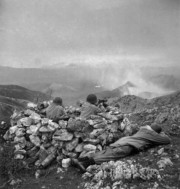
The 75th Anniversary of the Battle of Monte Cassino

At Home on the Shoreline of Wellfleet
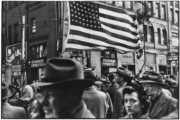
Elliott Erwitt’s America
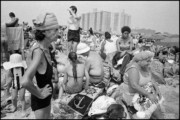
Bruce Gilden’s Coney Island
Bruce gilden.

Past Square Print Sale
Conditions of the Heart: on Empathy and Connection in Photography

Reminiscent Studio
To Make A Wedding Wonderful Story
- Photography Composition And Concepts
How To Use Visual Metaphor In Photography

A visual metaphor is a word or phrase that symbolises something else. They are used by photographers to heighten emotions and bring attention to their work. If you combine a sombre expression with symmetry, your visual metaphor may fall flat. Visual metaphors are used by photographers to heighten emotions and draw attention to their work.
A metaphor is a word or phrase that represents another thing. A visual metaphor may be used in photography to enhance the meaning of your narrative. Here’s how to use simple photography techniques to create an effective visual metaphor.
Frequently Asked Visual Metaphor Questions
Is it possible for an image to be a metaphor.
An image may undoubtedly serve as a metaphor. Many advertisements employ visual metaphors to make their products appear more enticing. Photographers use visual metaphors to amplify emotions and draw attention to their work.
What Exactly Is A Film Metaphor?
Metaphors are symbols in films that are represented by items or names. The film The Truman Show is a fantastic illustration of this. The main character is forced to live in an artificial environment. He climbs a flight of stairs at the end of the film to enter the real world. The stairwell represents freedom.
What Exactly Is An Art Metaphor?
Metaphors are emblems of many subjects in art. Constant Mayer’s (1866) painting Love’s Melancholy, for example, is a metaphor for heartbreak and loneliness. Hope, self-discovery, feminism, and real love are other recurring themes.
What Constitutes A Good Metaphor?
Popular metaphors:
- The apple of my eye
- Drowning in a sea of grief
- Life is a diamond
- A heart of stone
- A golden ticket to freedom
How To Make Use Of Visual Metaphors
Symmetry can help you feel at peace.

Symmetry appeals to people because it is both predictable and attractive. It can be used to represent inner serenity, companionship, or hope. Symmetry may be found practically anywhere. The kind you select is determined by your theme and selected genre. For instance, if you are a nature photographer, you may see water reflections. You may shoot your subject in front of a completely symmetrical wall if you are a portrait photographer. Pay attention to your model’s expressions if you’re a portrait photographer. If you mix a sorrowful countenance with symmetry, your visual metaphor may fall flat.
Use Negative Space To Create Hope

Negative space is additional space in your photograph. This might be the sky, a wall, or any empty space in your image. Excessive negative space may be annoying. However, it has the potential to be an outstanding metaphor in commercial photography. Negative space is sometimes associated with hope and promise. Here are a couple such examples:
- A person on top of a mountain, surrounded by blue sky This gives the impression of victory and possibilities.
- During the “golden hour,” people gaze into the distance. This shows that they are excited about the future.
Something as basic as an empty sky may be used to represent a wide range of pleasant sentiments.
Using Simple Props To Highlight Emotions

Examine commonplace objects in your home. Is there anything that makes you think of a certain sensation or theme? You may use these elements to enhance the impact of your visual metaphor photos.
- Paper butterflies can represent freedom.
- Fake cotton clouds can represent daydreamers.
- Flying confetti can represent joy.
Make Mirrors A Metaphor For Self-Reflection

Mirrors literally reflect one’s own image. In photography, they might represent self-reflection or self-discovery. You can add depth to your photographs by using basic Photoshop techniques. Glass may be used to represent beauty standards or a broken sense of self. You may change the appearance of reflections on your model. This might be seen as a metaphor for self-development or dishonesty. A distinct mirror image might also represent a dream. For example, consider a little child who looks in the mirror and perceives himself as a fireman.
Using Nature’s Elements, Create A Sense Of Life And Growth

Nature is frequently connected with expansion, wealth, and spirituality. You may use something as basic as a flower to indicate that your model is evolving as a result of an encounter. Flowers are frequently used by photographer Bella Kotak in her fantasy-themed images. These natural features give her photos a grounded and mystical appearance. They are also excellent visual metaphors for progress and growth.
Stairs Can Be Used To Emphasise A Difficult Or Hopeful Journey

Stairs are just a means of reaching another level. They can be viewed metaphorically as a voyage. The manner in which you arrange your model on the steps will influence whether or not the journey is challenging. If your model descends the steps, it will represent failure. They will represent development and freedom if they ascend the steps. Composition and destination are two more factors that will influence metaphors like this. Where is your model headed? Is there a definite endpoint that will deepen the significance of your metaphor?

Emphasize Differences To Emphasise Uniqueness
One of the most commonly used analogies is “the black sheep of the family” or “the ugly duckling.” Most artists investigate this subject because it is relatable. Is there something or someone in your life that makes you feel distinct? What makes you feel excluded?
Instead of taking these instances literally, use common things as imaginative metaphors. To represent individuality, place a bright green apple in a crate of oranges. You may use the stages of a butterfly’s metamorphosis as a creative metaphor for the stages of a person’s life.

Merge Two Photos To Increase The Visibility Of Your Metaphor
Double exposures are an excellent way to draw attention to a metaphor. You only need two images. So that the end outcome is visually pleasing, one of them should be darker than the other. Many photographers use silhouettes in conjunction with landscapes, cityscapes, and portraiture. Positioning is critical.
Consider the shadow of a standing person and a photograph of an open book. If you position the book in the person’s head, it might represent intellect, a love of reading, or daydreaming. This is a fairly straightforward example. You may get quite creative with different picture pairings. If you don’t have a picture in mind, you can experiment with free stock photographs available online.
You’ll be able to add more depth to your photographs after you understand how to apply visual metaphors. Potential may also be found in basic, commonplace items that most people miss. This will open up a whole new world of creative possibilities for you.
Related Posts

What Is Colour Blocking Photography And 7 Awesome Ideas To Encourage You For Colour Block Photography

The Brenizer Method | Documentary
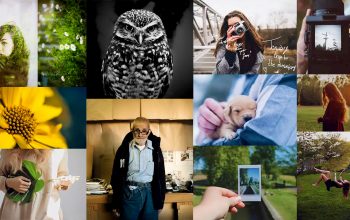
All You Need To Know About Photo Series And 12 Awesome Photo Series Ideas To Try
Recent updates.
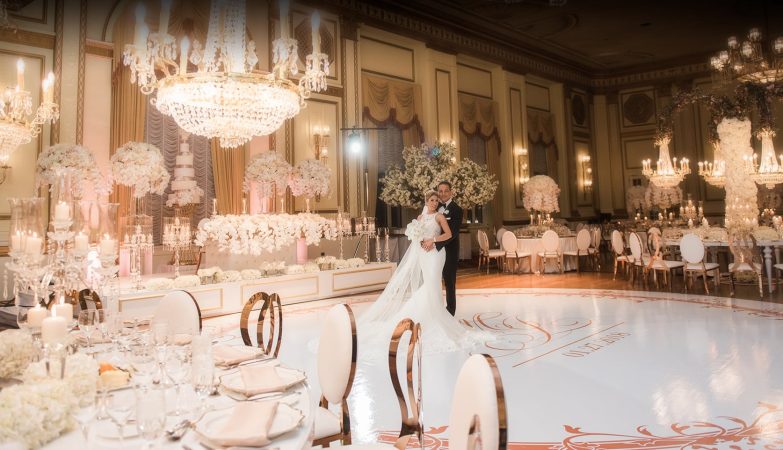
Bridal Photography Must Do’s For Brides | Include A Sneak Away Session

Tips To Add Garland To Your Wedding Decor

Visual Metaphor in Advertising: 20 Examples from Top Brands

Visual metaphor in advertising pertains to graphics that associate a thing or person that represents a concept or idea. The overall composition of these images is meant to symbolize something else. The outcome? Truly remarkable and powerful imagery that opens up visual interest. Using visual metaphors in advertising gives your audience a unique visual experience. Here are 20 visual metaphor examples for inspiration.

Braun is known for a wide product range of epilators, razors, and products for your hair grooming and removal needs. Well, Braun sure knows how to symbolize hair by replacing it with noodles.
Featuring their hair straightener product, Braun banks on visual metaphor to show how it does the trick. The hair iron shows how it straightens the noodles from their curled-up form inside the packaging. It shows that Braun products can straighten even the curliest hair.
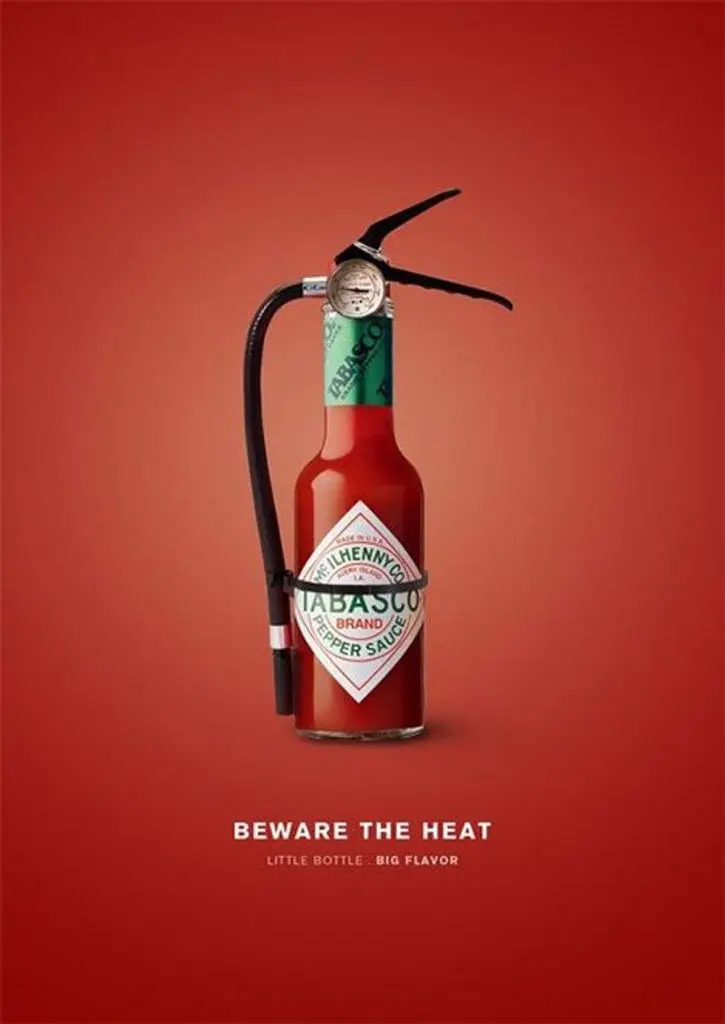
At first glance, you’ll notice the small Tabasco bottle. But as you look at the image’s entirety, you can see that there’s a hose, nozzle, pin, and pressure gauge attached to it. The entire visual displays a fire extinguisher.
This visual metaphor from Tabasco depicts how this small bottle can be extremely hot. The fire extinguisher illustrates how one might need it to put out the “fire,” or in other words, if they can’t handle the heat.
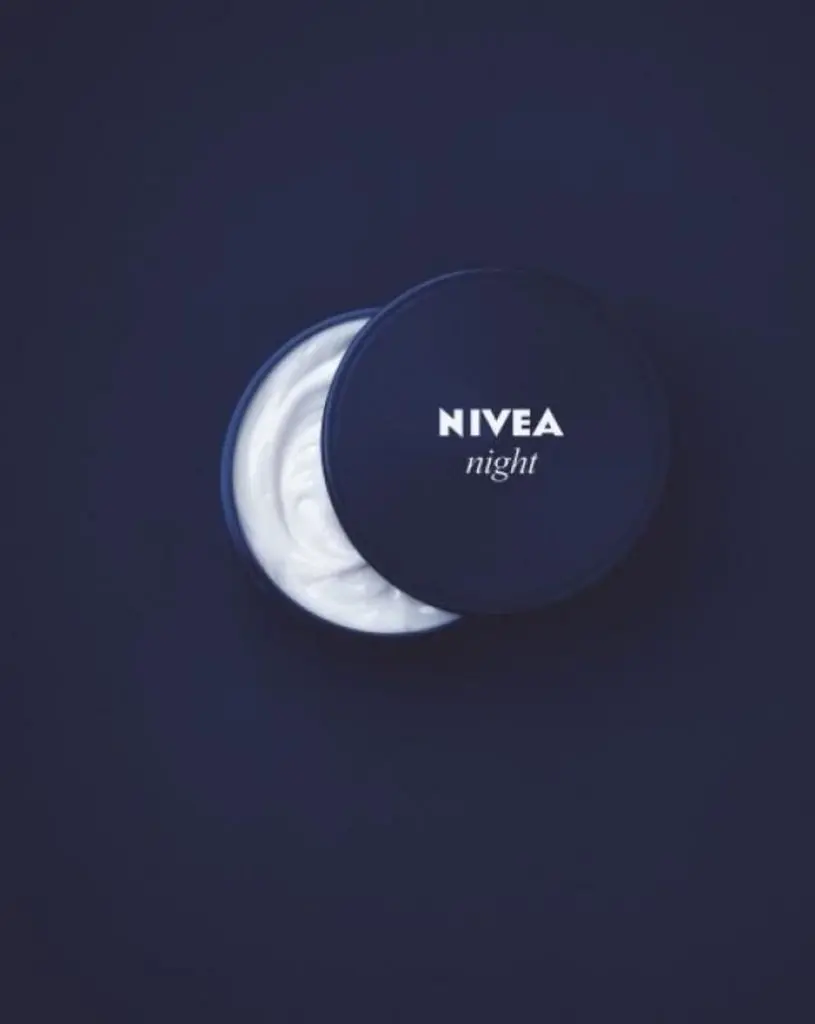
This is a straightforward graphic that has a lot of significance behind it. It doesn’t take rocket science to create something brilliant. And Nivea knows how to play it cool with simplicity.
Promoting their night cream, Nivea presents a half-opened bottle, exposing the cream inside the can. However, the cream resembles a half-moon, which symbolizes “night.” A brilliant way to represent the brand’s product.
Tell Better Brand Stories
Get all the custom designs you'll ever need
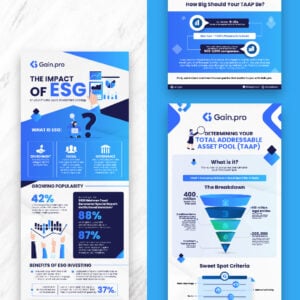
4. Volkswagen Beetle Denim
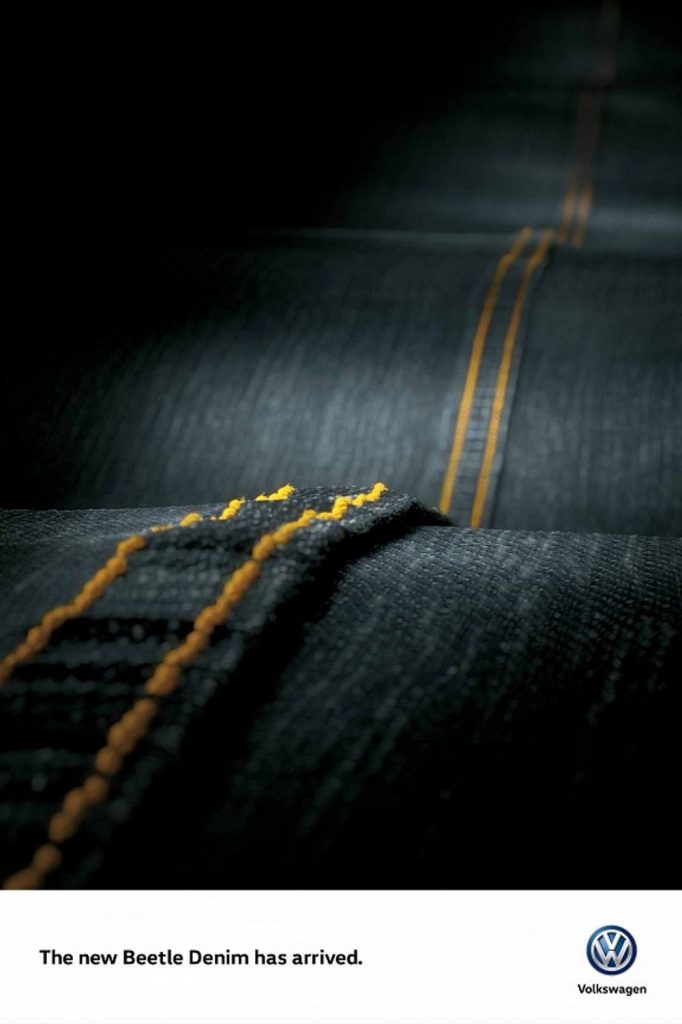
Motorists were in for a treat as Volkswagen released their Beetle Denim models. These vehicles feature unique accents and interiors not found in any regular Beetle. The interior features light blue denim seating and jeans-inspired backseat pockets.
One way to promote your unique product design and branding is to feature it front and center. The seams remind you of the dashed lines that you see in the middle of the road. Volkswagen paints a picture in viewers’ minds about taking their new Beetle on a long drive.
5. BusConnects
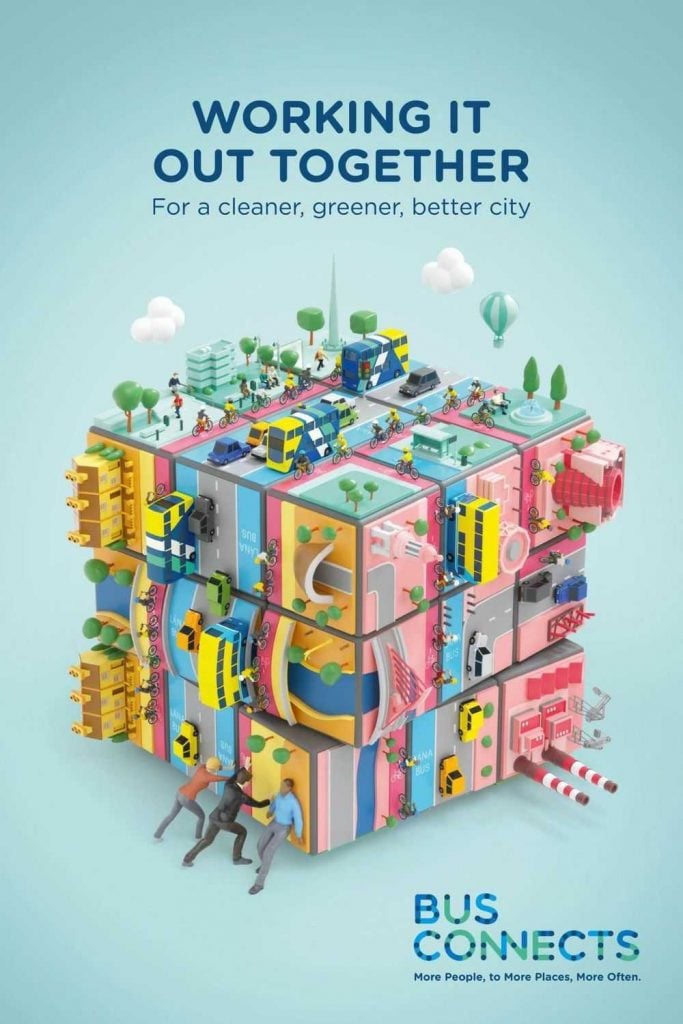
BusConnects is a program that helps Irish cities improve bus services and make public transport sustainable. This propaganda is for a cleaner and greener Dublin. But why use a Rubik’s Cube?
As you know, a Rubik’s Cube is solved when all colors are placed on one side of the cube. And it would take good analysis and strategy to achieve it. BusConnects shows that achieving a cleaner and greener city would need the people’s collective effort.
6. Save the Children
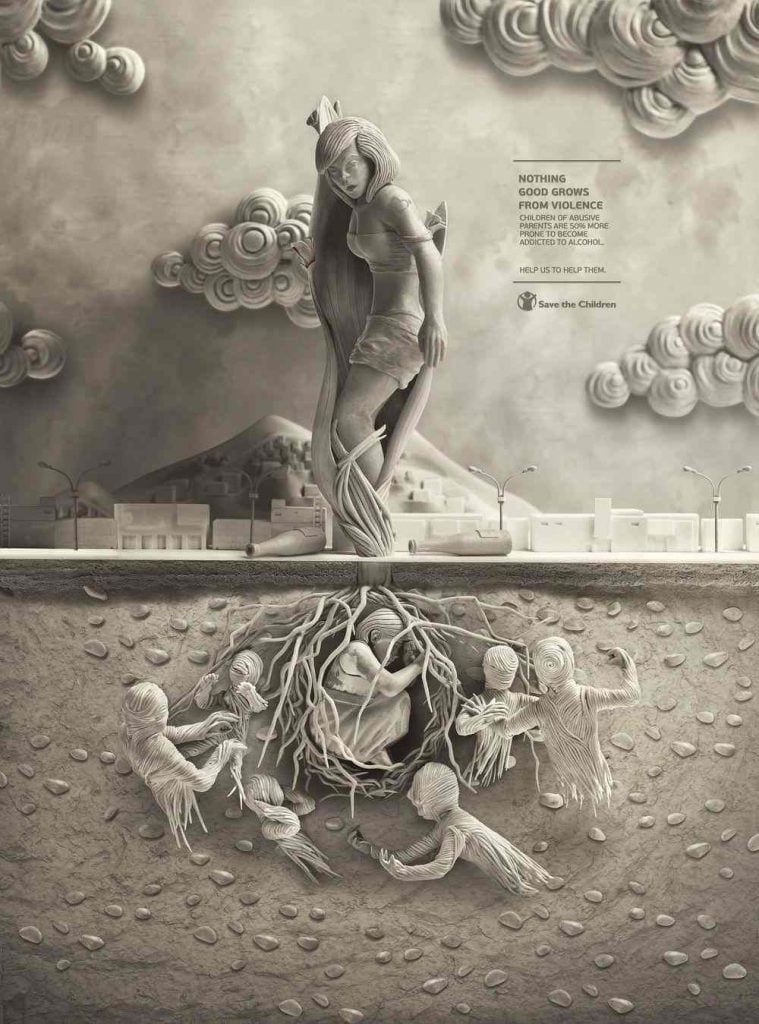
Save the Children features an impactful visual metaphor with this design. For their anti-violence campaign, they advocate how abusive parents could lead children to alcohol addiction.
The imagery shows a child encapsulated in a tree’s “root.” But the tree is represented by a woman, who is seemingly the mother. Overall, the graphics symbolize that every bad experience is ingrained in every child from the early stages — just like a seed.
7. Tropicana
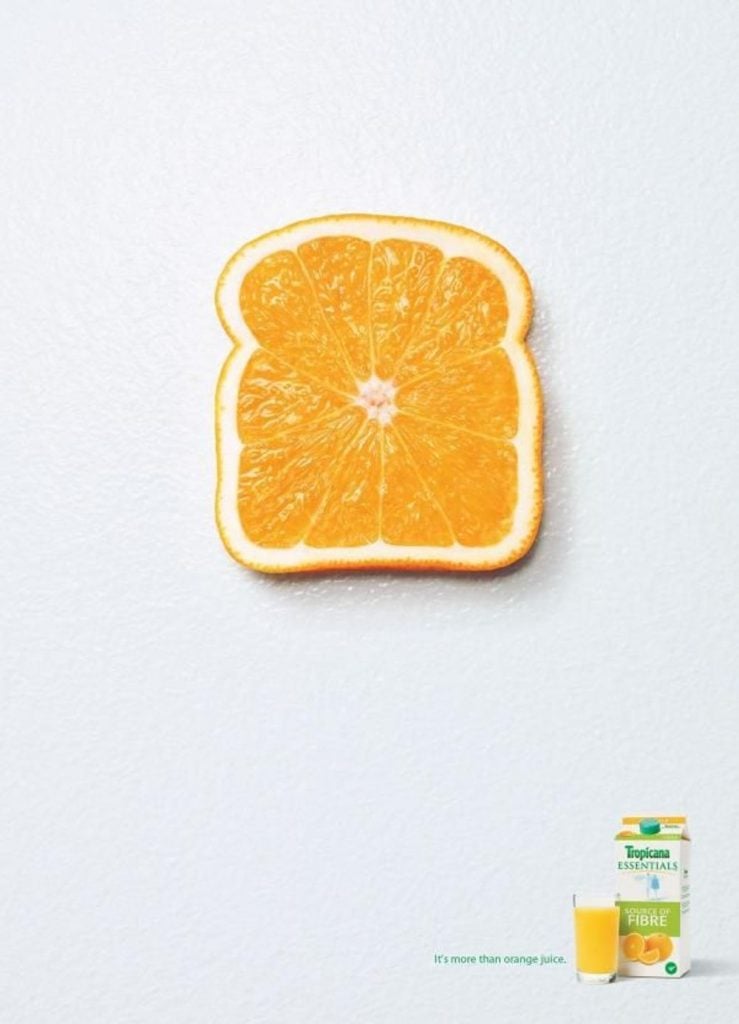
Tropicana is your go-to brand when you’re craving orange juice. Orange juice can be a good addition to a meal or a great refreshment on a sunny afternoon. But Tropicana claims orange juice is more than just orange juice.
The brand wants consumers to ensure their daily intake of orange juice because it’s a complete breakfast. And the brand plays a clever visual metaphor by shaping an orange into a toast to resemble breakfast. Plus, Tropicana implies that the meal will be complete with a drink of their tasty orange juice.
8. Burger King
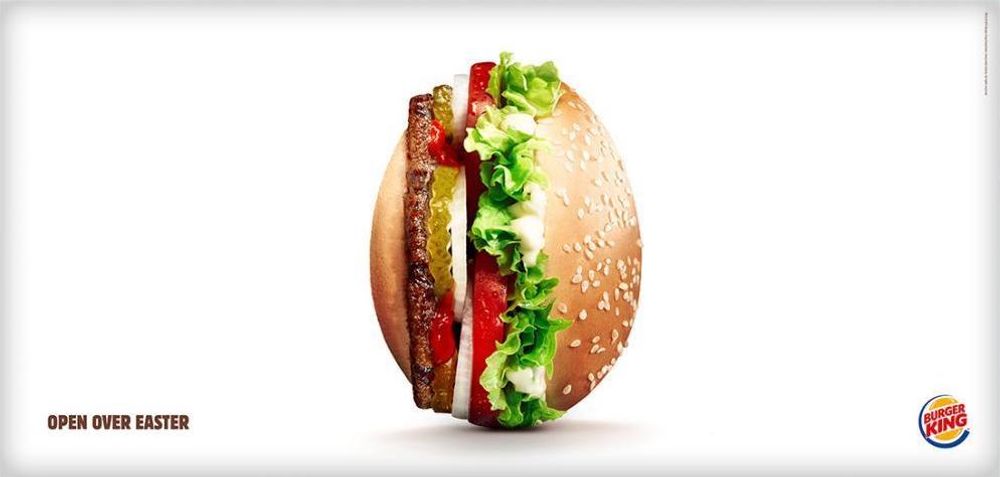
Burger King communicates with its audience through a visual metaphor during Easter. Since the hamburger fast-food chain is open during Easter, they turned a burger to its side to resemble the shape of an egg. A perfect representation of the traditional Easter Sunday egg hunting.
9. McDonald’s
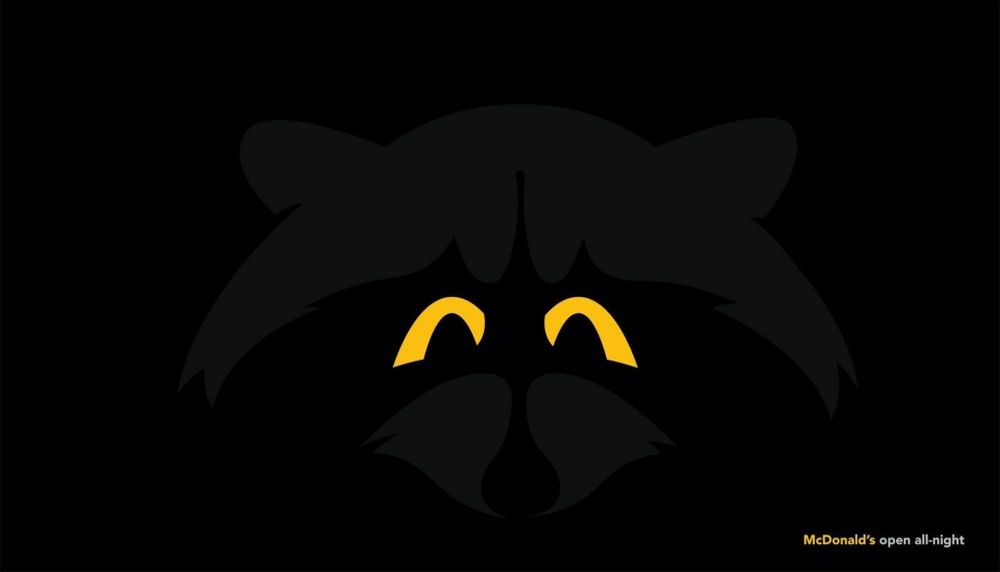
Here’s another example of a visual metaphor in advertising that banks on simplicity. McDonald’s is known for its innovative advertising designs , and this one is no exception.
To show consumers that the fast-food giant is open 24/7, they showcase nocturnal animals with their eyes shining brightly. However, they’re not an ordinary set of eyes. The eyes are the McDonald’s logo split in half. This is an ideal way to promote your offer while staying on brand.
10. World Wildlife Fund
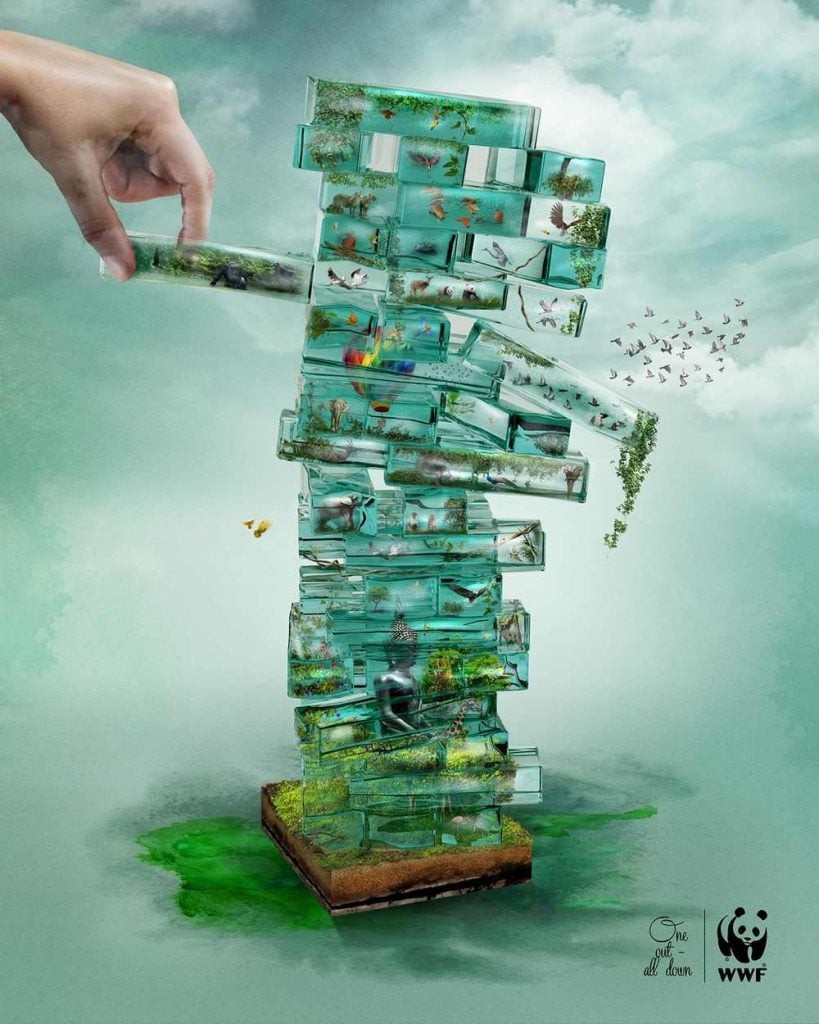
WWF leaves no stone unturned in protecting voiceless animals. More often than not, they do it through thought-provoking and compelling marketing designs. WWF is known for its unorthodox visuals in advertising.
Take this Jenga advertisement, for example. WWF compares the ecosystem to Jenga. Jenga is a game that involves pulling blocks carefully without knocking down the entire structure, which is a great challenge. WWF shows how the ecosystem will come crashing down when an animal species is eliminated.
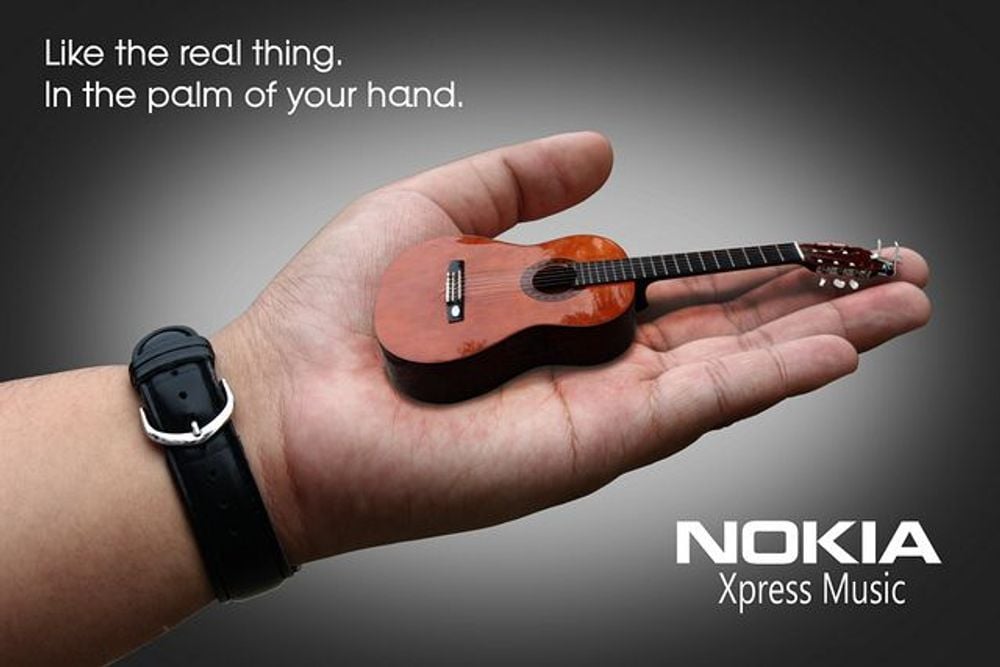
Although it has been kicked out of the spotlight, Nokia reinvented visual metaphors in advertising during its prime days. And this particular one is a perfect example!
With a wide range of mobile phone models, Nokia relaunched a specific one solely focused on music. It was Nokia’s relaunch of the XpressMusic phone. The mobile phone company claimed that it was like having all your favorite tunes in the palm of your hand. A guitar on a hand shows how accessible music is on a portable gadget.
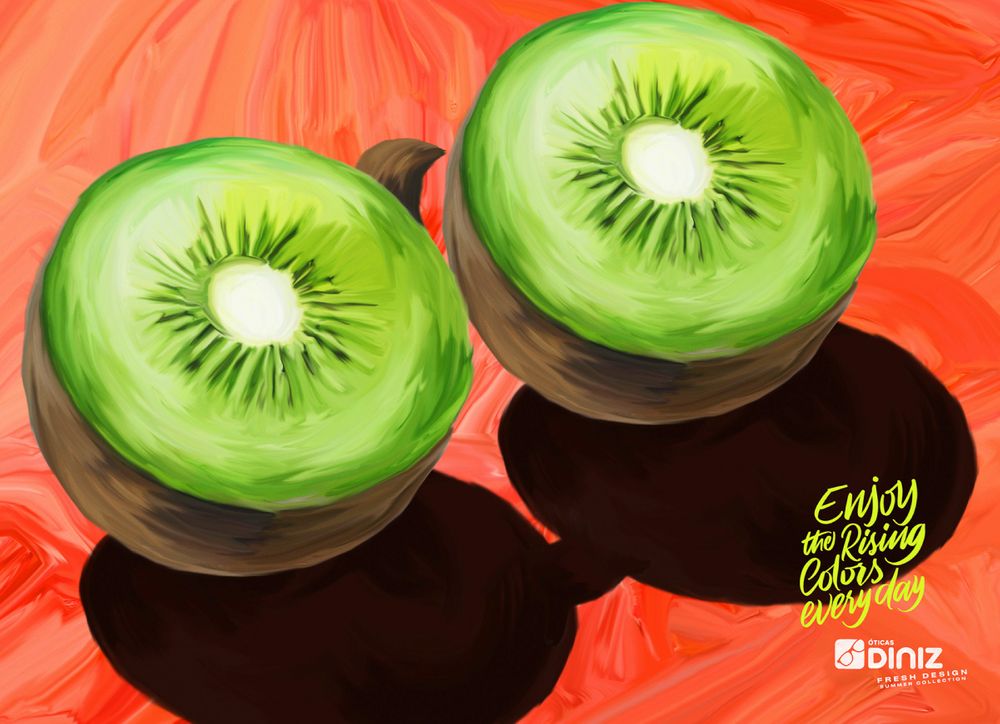
Double meanings are also an excellent way to engage your audience’s minds and encourage fun at the same time. It’s an outstanding achievement when you can convey two different concepts in one image. And Diniz achieved that through their eyewear collection promotion.
Launching their summer eyewear pieces, Diniz used tropical fruits and shaped them into sunglasses. The fruits represent how timely the sunglasses are for the sunny weather. Plus, the fruits’ shadows are also shaped according to different eyewear styles.
13. Jordan Insurance Company
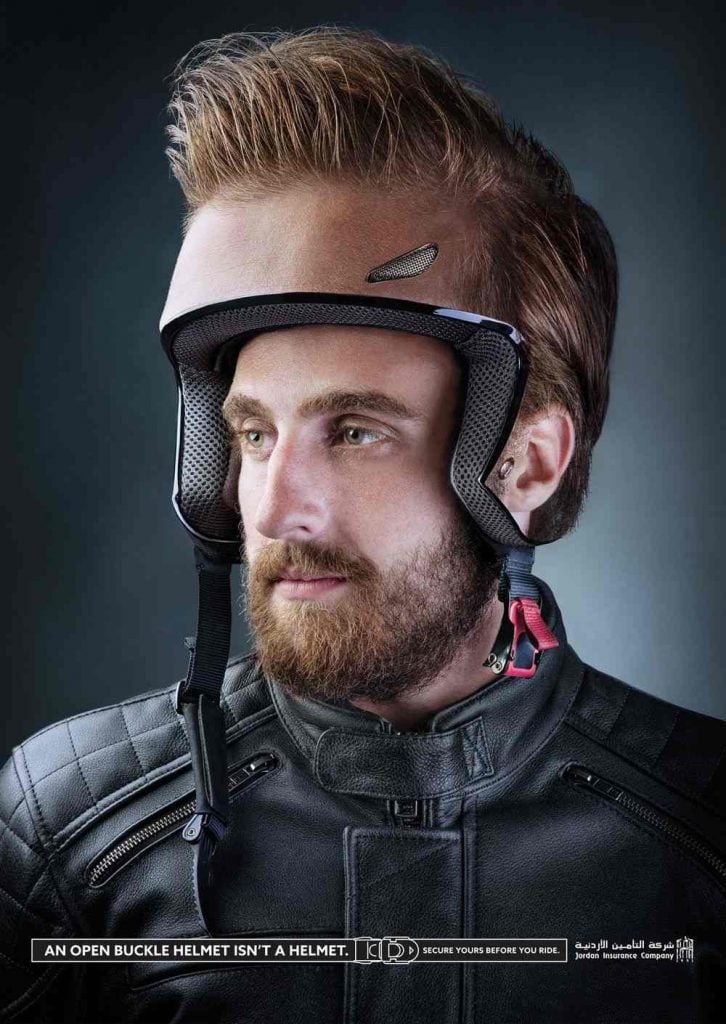
Visual metaphor in marketing is both bizarre and captivating. Achieving success in this department means stimulating the minds of your viewers. Here’s one example from the Jordan Insurance Company that’s both bizarre and captivating.
Viewers might not get the ad’s concept at first glance. But you need to look at it hard enough to understand the message it communicates. It means wearing a helmet for safety is the smartest thing to do. But some motorists are too complacent about not locking their helmet securely. This ad means if you don’t lock the helmet straps, the helmet serves no purpose to protect your head.
14. Tic Tac
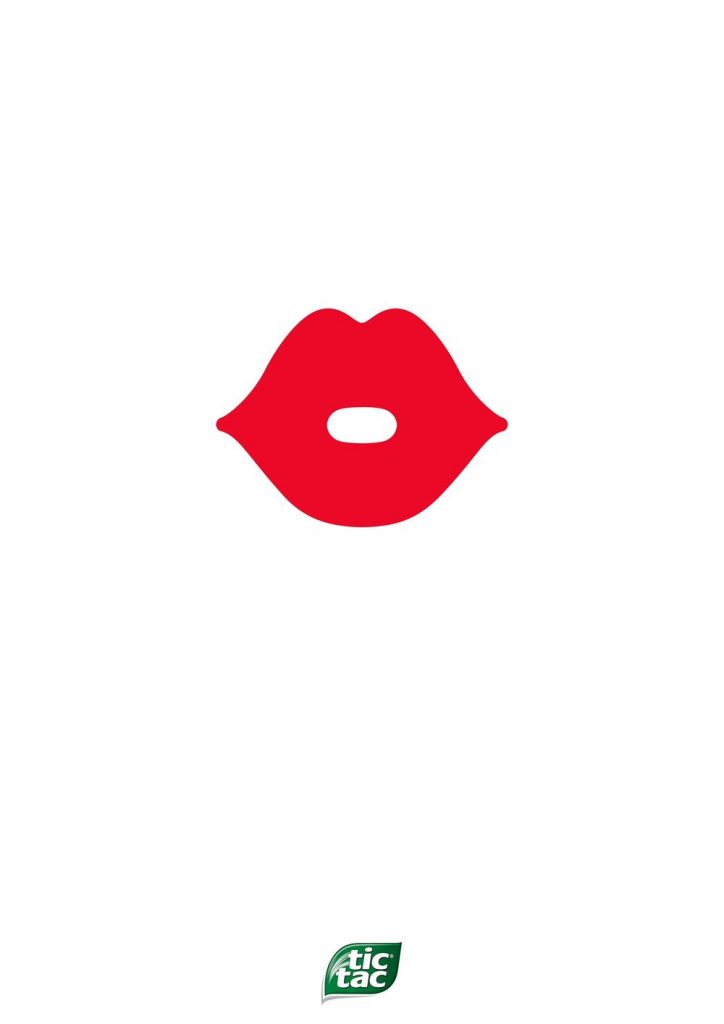
Another clever marketing design from the famous candy brand Tic Tac. There might not be a lot going on in this visual, but the message is there. It means that you’re never too sure when special moments happen.
That’s why you should always carry your Tic Tac container with you because you’ll never know when someone’s going to lean in and kiss you! And that’s not all, the negative space in the middle of the lips is also shaped like a Tic Tac candy.
15. United Nations
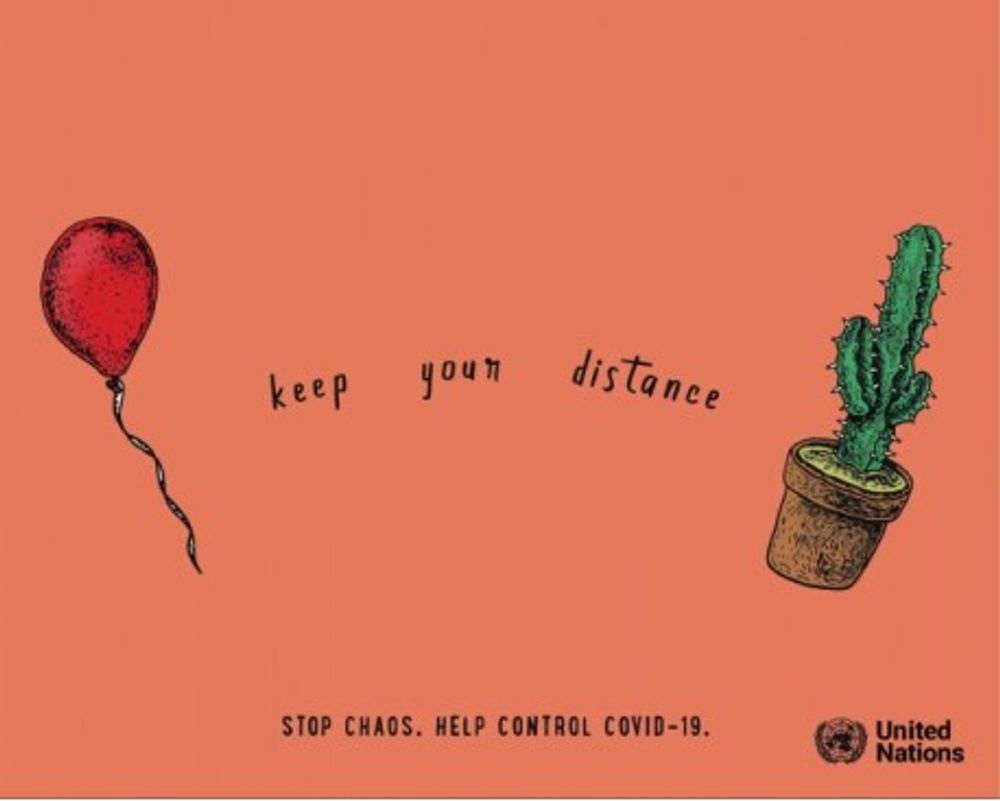
The COVID-19 pandemic has changed the normal that people were once used to. We now have to keep our distance and practice safety measures by washing our hands. The less interaction we have with other people, the lower our chances of contracting the deadly virus.
The United Nations wants to remind people to keep their distance while poking fun at their audience and keeping the imagery lighthearted. They released a series of designs with simple images of two things. These two things, when put together, could lead to destruction or damage. Here’s an example of a cactus and a balloon. You know what happens next when both things are kept in close proximity to each other.
16. First Call
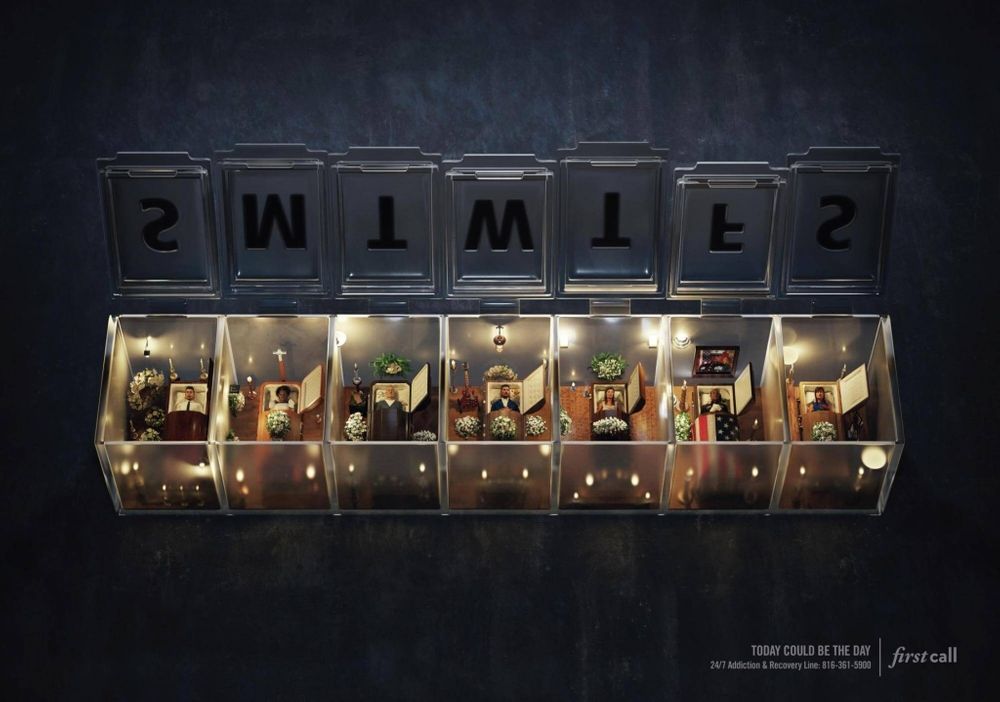
Emotional marketing is also essential in creating advertisements that tug at people’s heartstrings. Moreover, making your visual metaphor a little bit dramatic can also help in conveying your message.
Here’s one campaign from First Call, an addiction and recovery hotline. As you know, pills can be detrimental to your health over time. First Call made their message clear about how people shouldn’t be reliant on pills. The brand displays a coffin in every compartment to depict that relying on pills could damage your health, leading to your demise.
17. Floslek

Another figure of speech that can also be used in visual metaphor advertising is hyperbole. Hyperbole means exaggerating a person or thing and making it seem bigger or better. Floslek is a sunblock brand that magnifies the imagery in this particular example.
They placed the colossal sunblock behind beachgoers to show that it protects their skin from the heat of the sun. Plus, they situated it along the beach to show that the sunblock is water-resistant.

People who are constantly moving from one home to another could be living “in a box.” IKEA reminds people that living in a box isn’t all that bad, especially if you buy the brand’s high-quality and affordable products.
IKEA tells homeowners to “Unbox your life” by buying from this ready-to-assemble and affordable furniture brand. The ad shows a simple contrast between other habitants seemingly living a dull and boxed life. The colors symbolize IKEA’s way of making your life more fun and exciting.
19. TriHonda
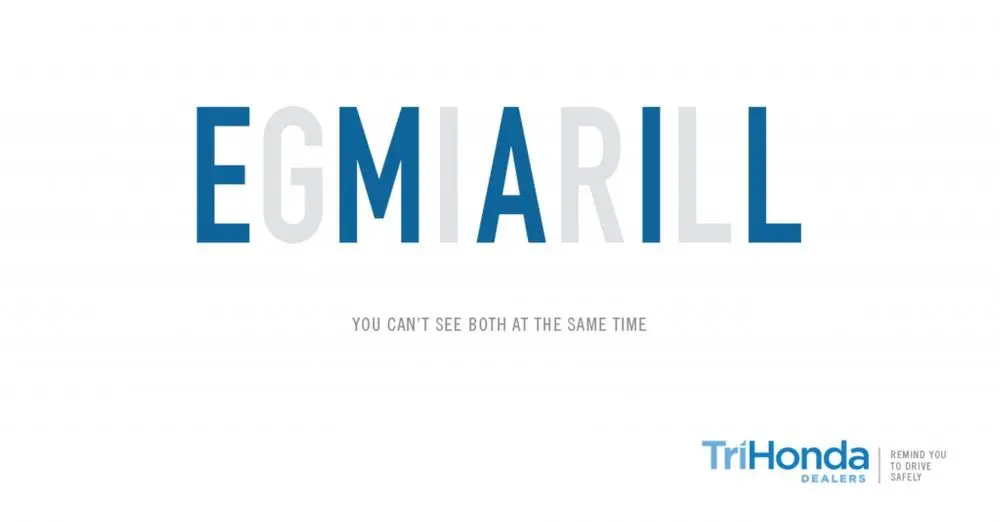
You must also try to bank on copy to create compelling ads that make people think. TriHonda has a lovely message for drivers to never be on their phones while driving. In this ad, you’ll see the words “GIRL” and “EMAIL” combined in one line with different colors.
At first glance, you can’t decipher both words. This signifies that it’s hard to see pedestrians crossing when you’re using mobile phones while driving. And this could lead to disaster. So TriHonda reminds drivers to either stop the vehicle when they check their phone or focus on the road.
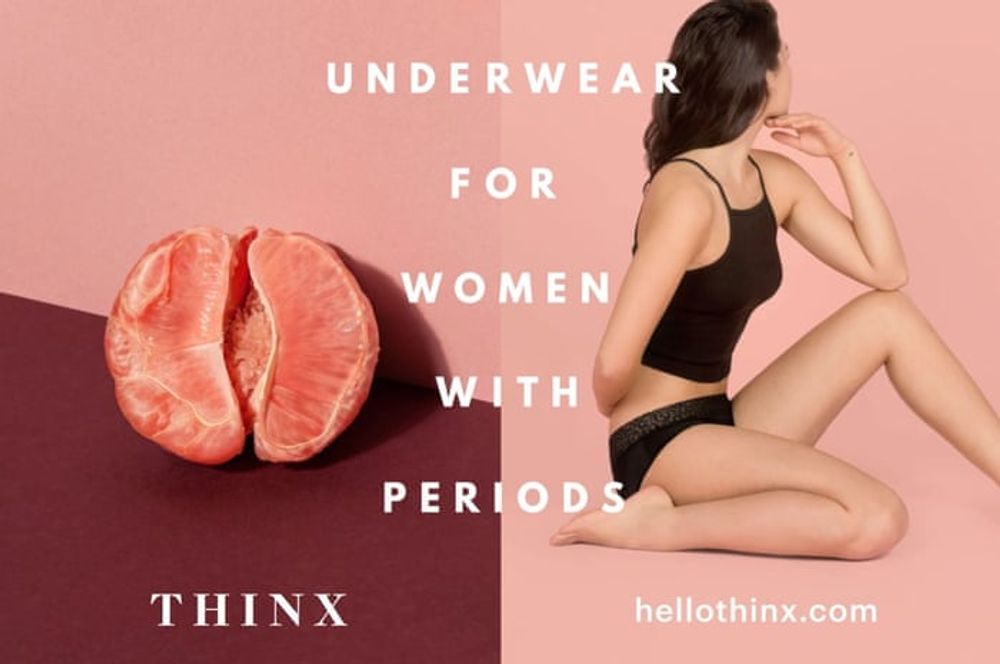
Thinx is a brand that sells underwear for women with periods. If you’re not able to represent your product literally, using symbols is an excellent way to get your message across. Thinx achieved this by using the half-peeled grapefruit as a symbol of a vagina. It’s a feminine and visually communicative way to promote lingerie without going overboard.
Visual metaphor in advertising is becoming common in brands’ marketing campaigns. Not only are visual metaphors unique, but they also drive more engagement due to their unusual imagery.
But visual metaphors in marketing aren’t easy to deliver. You’d need the help of professional graphic designers for that. Penji can help you create unique and interesting visual metaphor designs, like these 20 examples. Subscribe now and get a limited 15-percent discount.
Related articles

10 Best Stock Illustration Sites You Need to Know Now

11 Exceptional Graphic Design Firms to Explore in Philadelphia

How to Use Hootsuite

How to Use Sprout Social
Want an entire design team for a fraction of the cost?

Advertisement
Supported by
‘Godzilla x Kong: The New Empire’ Review: Running Out of Steam
The latest in the Warner Bros. Monsterverse franchise shows signs of an anemic imagination.
- Share full article

By Alissa Wilkinson
Nothing about “Godzilla x Kong: The New Empire” makes sense, which is not, on the face of it, a problem. We have not settled into cushy cinema seats with our comfortingly stale popcorn to engage in discourse about metaphors and science; we are here for the stars in the title. About that title: “Godzilla x Kong” (meant to echo various other titles in other, non-Hollywood Godzilla movies) could mean Godzilla times Kong, or Godzilla crossed with Kong, or Godzilla against Kong — some permutation of titans. Whatever it is, there will be punching. We are here for the punching.
What we’re not here for is the humans, which is lucky, because they’ve been dropping like flies. Most of the characters from the last few films — including the 2021 “Godzilla vs. Kong” (also directed by Adam Wingard) — have disappeared, largely without explanation. Our main character now is Dr. Ilene Andrews (Rebecca Hall), adoptive mother to a tween, Jia (Kaylee Hottle), a member of the Iwi tribe, who communicates with Kong directly via sign language. I particularly missed Alexander Skarsgard’s Dr. Nathan Lind, whose absence is sort of explained but not mourned, and who has been replaced, for narrative reasons, by a kooky veterinarian to the titans played by Dan Stevens. (For some reason, I assume to signal the kookiness, Stevens sports an exaggerated Australian accent.)
They’re joined once again by Bernie Hayes (Brian Tyree Henry), the conspiracy podcaster-blogger-documentarian-weirdo from the last film. For some reason, he’s convinced that nobody believes his stories about the titans, even though actual Godzilla is roaming the Earth and shown on the nightly news. (I’m more stuck on the strangely fantastical idea that he’s a popular blogger. Wouldn’t he have a Substack by now?)
5 Films Our Critics Are Talking About

On the Adamant
Not rated | Documentary
This documentary by Nicolas Philibert drifts along, with unnamed patients and their caretakers, on a large houseboat in Paris.
Read our full review.

Lousy Carter
Not rated | Comedy
A college professor gets a grim diagnosis in this comedy from Bob Byington.

The Beautiful Game
PG-13 | Drama, Sport
This heart-string-tugging Netflix movie about a homeless soccer team, featuring Bill Nighy and Micheal Ward, puts the emphasis on play and uplift.

Asphalt City
R | Drama, Thriller
Sean Penn plays a flinty paramedic showing a rookie the ropes in this maddening drama about emergency medical workers in New York.

The Listener
Not rated | Drama
Tessa Thompson’s still and luminous performance makes this post-Covid drama about loneliness, directed by Steve Buscemi, worth watching.
These humans are pretty boring, more anemic than they were in the last movie. They’re there purely for narrative propulsion through this story, which begins with Kong living in the Hollow Earth (exactly what it sounds like) and Godzilla up on the surface. As long as the twain never meet, we’re good — and by we, I mean humankind.
Which means, of course, they’ll meet. The scientists spot Godzilla napping in the Colosseum, then stomping his way through Europe and northern Africa, seemingly absorbing as much nuclear power as he can because he senses some confrontation coming. At the same time, something is very wrong in Kong’s world down below. And Jia is having strange dreams, too — dreams that lead to an expedition into the Hollow Earth.
What follows is an attempt to establish a whole lot of mythology for the Monsterverse franchise. (Their term, not mine.) This is a big mistake. You can tell it’s a mistake, because all of that mythology has to be revealed in tedious expositional dialogue. More important, once you know what happened in the past, you know precisely what will happen in the present, which rips any remaining suspense out of the film, leaving only the punching. (So much punching.)
Besides: Does this series need a mythology? Both Godzilla and Kong have a rich screen history to draw on — this is the 38th movie for Godzilla and the 13th for Kong, and though they haven’t shared the screen until recently, they bring all of their baggage and back story with them. It feels like a desperate attempt for the crossover franchise to justify both its existence and its continuation.
Which is not surprising. This series’ track record induces whiplash. The 2014 film “Godzilla,” a kind of reboot of the original Toho series featuring the character, was a legitimately excellent film, balancing spectacle and human pathos. But then came “Kong: Skull Island” and “Godzilla: King of the Monsters,” both meant to build toward a shared universe, both of which were not just bad but real bummers. Next was “Godzilla vs. Kong” which wasn’t, technically speaking, good — but it promised confrontation and delivered it, with a late-breaking coda of unwilling and visually spectacular cooperation between massive ape and nuclear lizard. It was a blast to watch, not least because the climax happened: The two monsters finally had their long-teased meeting.
But with that zenith in the rearview mirror, “Godzilla x Kong: The New Empire” has very little road left to cruise, and it shows. The best stretches involve Kong lumbering through the landscape, Godzilla stomping around crushing things, and of course the inevitable final confrontation, which has a few surprises up its proverbial sleeves. Kong in particular seems to have no problem communicating without human language, and those extended scenes are so fun to watch that it’s disappointing to swing back to the humans.
Certainly, humans can be a fruitful part of these monster movies. The recent Japanese film “Godzilla Minus One,” produced for a fraction of the “Godzilla x Kong” budget and recipient of the Oscar for best visual effects this year, manages to combine the creature with true pathos and a focus on the human cost of war, guilt and trauma. It’s more in line with the origin of Godzilla, too, as a metaphor for Japanese generational trauma related to the atomic bomb. In 2004, writing for The New York Times , Terrence Rafferty succinctly described the monster as embodying “a society’s desire to claim its deepest tragedies for itself, to assimilate them as elements of its historical identity.”
None of that is here. In fact, “Godzilla x Kong” is evidence the original thread has been lost entirely — a shame, in an era haunted by monsters the movies can only hint at, from climate catastrophe, destructive weaponry and geopolitical strife to power-hungry, brutal authoritarianism. There’s no reflection here at all, not even space to contemplate what might lie beyond the literal. Beyond the main cast, the humans in this movie exist only to get squashed like ants by falling debris and mangled buildings. They are expendable, but it doesn’t matter. The meaning of these films isn’t in metaphor at all. It’s in punching.
Be warned: There’s a lot of guts in “Godzilla x Kong,” guts from mammals and reptiles ripped in half, guts from sea monsters, Technicolor guts, way more than I expected. They feel appropriate, for a monster movie, and aren’t quite gross enough to merit an R rating. But as I pondered the guts, I found myself wondering one thing: When will someone have the bravery — the guts, you might say — to make a movie with Kong, and Godzilla, and various other titans and monsters, and no humans at all?
Or maybe there’s a greater question at stake: When will Hollywood have the guts to make a fun blockbuster like this that dares to acknowledge the real menacing monsters?
Godzilla x Kong: The New Empire Rated PG-13 for destruction, some mild profanities and so, so many guts. Running time: 1 hour 55 minutes. In theaters.
Alissa Wilkinson is a Times movie critic. She’s been writing about movies since 2005. More about Alissa Wilkinson
Explore More in TV and Movies
Not sure what to watch next we can help..
“X-Men ’97,” a revival on Disney+ that picks up where the ’90s animated series left off, has faced questions after the firing of its showrunner ahead of the premiere.
“3 Body Problem,” a science fiction epic from the creators of “Game of Thrones,” has arrived on Netflix. We spoke with them about their latest project .
For the past two decades, female presidential candidates on TV have been made in Hillary Clinton’s image. With “The Girls on the Bus,” that’s beginning to change .
“Freaknik,” a new Hulu documentary, delves into the rowdy ’80s and ’90s-era spring festival that drew hundreds of thousands of Black college students to Atlanta.
If you are overwhelmed by the endless options, don’t despair — we put together the best offerings on Netflix , Max , Disney+ , Amazon Prime and Hulu to make choosing your next binge a little easier.
Sign up for our Watching newsletter to get recommendations on the best films and TV shows to stream and watch, delivered to your inbox.

IMAGES
VIDEO
COMMENTS
Visual metaphors are more persuasive, more appreciated, and better understood than advertisements without visual metaphors. Visual metaphors are a balance between complexity and comprehension. To viewers, visual metaphors are a puzzle to solve and the greater the challenge, the greater the reward for solving the puzzle.
"In Pictorial Metaphor in Advertising (1996) . . ., [Charles] Forceville sets out a theoretical framework for the analysis of pictorial metaphor.. A pictorial, or visual, metaphor occurs when one visual element (tenor/target) is compared to another visual element (vehicle/source) which belongs to a different category or frame of meaning.To exemplify this, Forceville (1996, pp. 127-35) provides ...
Summary. INTRODUCING VISUAL METAPHOR. It is the contention of this essay that there are visual metaphors. That is, there are some visual images that function in the same way that verbal metaphors do and whose point is identified by a viewer in roughly the same way that the point of a verbal metaphor is identified by a reader or a listener.
A visual metaphor uses the pictorial representation of an object to suggest an association or similarity. Visual metaphors contain only images and are found in art, advertisements, film, and television. Visual metaphors use physical similarities to make something look like something else, or conceptual similarities, the ideas behind the images.
In this section, we will go into detail about four types of visual metaphors: juxtaposition, fusion, fusion, and replacement. The four types have different levels of complexity based on the number of inferences viewers need to make to come to an acceptable conclusion. 1. Juxtaposition. Juxtaposition, also called similes, includes two images ...
that we often use visual metaphors as a way of understanding the world. Robert N. St. Clair in Visual Metaphor, Cultural Knowledge, and the New Rhetoric, provides this example of the way metaphors function as cognitive models, or ways of knowing: A teacher who sees students as fragile human beings is using metaphor. He treats them as eggs
A visual metaphor is a representation of a noun through a visual image that suggests a particular association or similarity. Visual metaphors are commonly found in film, television shows, photography and even commercial ads. The meaning created from these objects can help move a story forward, relate to an audience or consumer, or establish a ...
A visual metaphor is a comparison of something that belongs to one category with another of a different category (Arnheim 125). It suggests a similarity between the two things. Visual metaphors vary from one cultural setting to another. For this reason the intended message may be lost if a metaphor from one culture is used in another one.
Abstract. It is the contention of this paper that there are visual metaphors. That is, there are some visual images that function in the same way that verbal metaphors do and whose point is identified by a viewer in roughly the same way that the point of a verbal metaphor is identified by a reader or a listener.
A visual metaphor is a metaphor the medium of which is visual. Like in any other metaphor, one part of it, usually named "source", applies to another part, usually named "target", and reconstructs it. The point is that the metaphorical application or reconstruction in visual metaphor is made by means of visual tools, forms and compositions.
Visual metaphors need to be seriously studied and understood in the host cultures of North America. Notes. 1 The study of art through history is the study of visual metaphors. This essay provides examples of such metaphors and it is argued that those insights derived from verbal metaphors can also be found in visual metaphors.
aphor; showing (a) how it occurs outside language, not only in the. visual arts but also in the perception of almost anything; and (b) how such seen metaphors are embodied in works of visual art, after pro-. viding the artist with the experience for such metaphorical expression; and (c) what constitutes a good metaphor, aesthetically speaking, in.
In this essay I investigate how image metaphors—metaphors that link one concrete object to another, such as "her spread hand was a starfish"—promote visualization in the reader. Focusing on image metaphors in Imagist poetry, I assert that the two terms (e.g., the hand and the starfish) of many of these metaphors are similar in shape and that this "structural correspondence ...
A worthy contribution in the still-growing efforts to de-silo theory from practice in writing and teaching about contemporary art, Mark Staff Brandl's A Philosophy of Visual Metaphor in Contemporary Art is approachable and informal while being specific and sincere, and a tonal success for the way it loosens up and shakes out the rhetoric, jargon, and tropes common to so much scholarly ...
Metaphors are a common figure of speech where a word or phrase is applied to something to which it is not literally applicable in order to imply a resemblance. Metaphors are also a common technique in visuals, particular print advertisements, and PSAs. Visual metaphors are highly structured images that stimulate viewers to understand one concept…
Spatial and stylistic visual metaphors are used in these narratives to depict specific psychological experiences in viscerally engaging ways. Drawing theoretical insights from Elisabeth El Refaie, George Lakoff, and Mark Johnson, this essay explores the middle ground between triumphalist and fatalist narratives through grey metaphors that ...
A+. Metaphor is a powerful tool for understanding and creating images. It's a way of using one thing to represent another, to see the world in terms of comparisons and symbols. When you understand metaphor, you can use it to your advantage in photography, finding new ways to see the world and express your ideas.
This critical writing, "Visual Metaphors in Print Advertising for Fashion Products by Stuart Kaplan" is published exclusively on IvyPanda's free essay examples database. You can use it for research and reference purposes to write your own paper.
The coherent aim, as a collection of photographs, is to stand as a late flowering of a hundred-year-old experiment in photography-based visual metaphor. This is a personal and intuitive response to the sculpted or uncultivated landscape: to the arched magic of trees; to hewn rock and dressed stone; to fossils deep and shallow cuts on sand, ice ...
essay addresses the use of visual metaphor as a way of expressing knowledge. Metaphors are really statements based on some kind of analogy where two things are compared to each other. This use of language allows knowledge to be seen in a new perspective. Visual metaphor is a term that designates how visual
Open Document. This "visual metaphor" shows the influences and growth of the Renaissance,depicting it through a plant's' growth. At the base, the larger root is labeled classical, and the smaller roots are labeled medieval. These show that the classical style of art was more influential to the Renaissance than the medieval art.
November 26, 20226 min read Reminiscent Studio. A visual metaphor is a word or phrase that symbolises something else. They are used by photographers to heighten emotions and bring ...
9. McDonald's. Here's another example of a visual metaphor in advertising that banks on simplicity. McDonald's is known for its innovative advertising designs, and this one is no exception. To show consumers that the fast-food giant is open 24/7, they showcase nocturnal animals with their eyes shining brightly.
Yajun Hu Yajun Hu. Photo essay submissions are awarded $500 and category winners get $250 prizes. The first place photo essay submission went to Victor Tan KH of Thailand for his six-photo entry ...
Nothing about "Godzilla x Kong: The New Empire" makes sense, which is not, on the face of it, a problem. We have not settled into cushy cinema seats with our comfortingly stale popcorn to ...